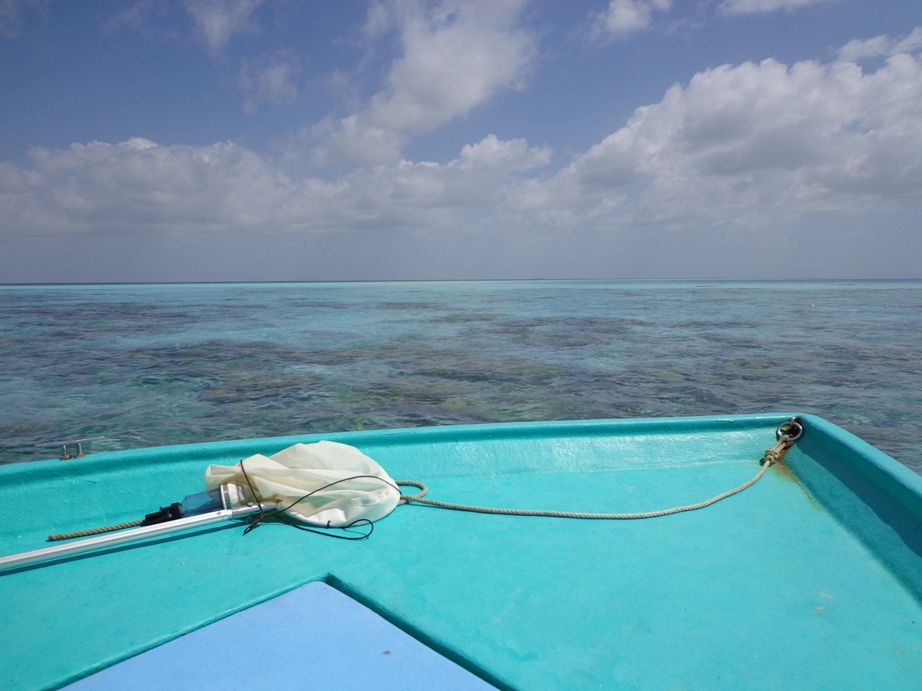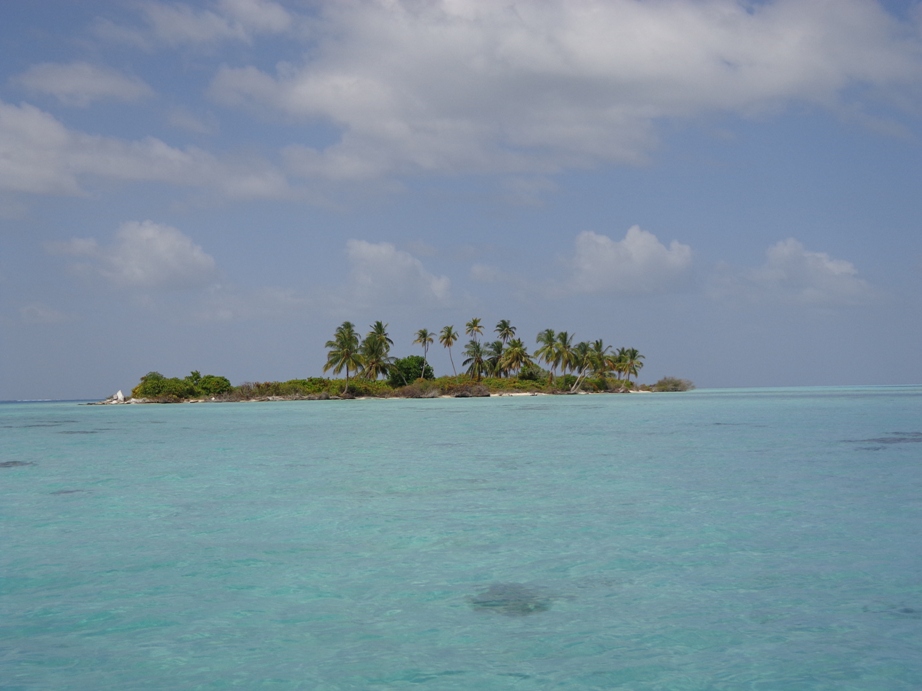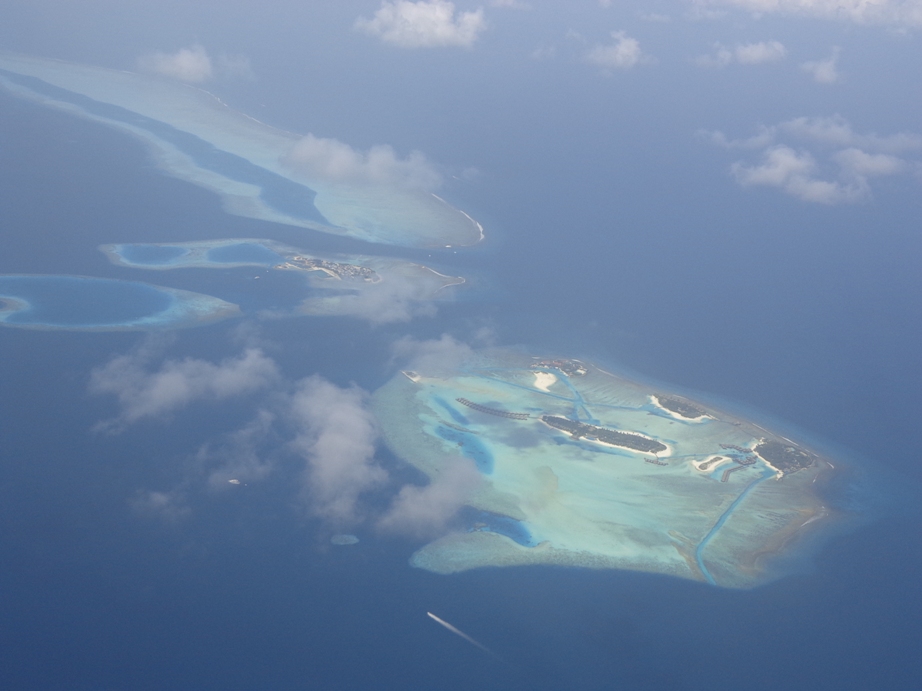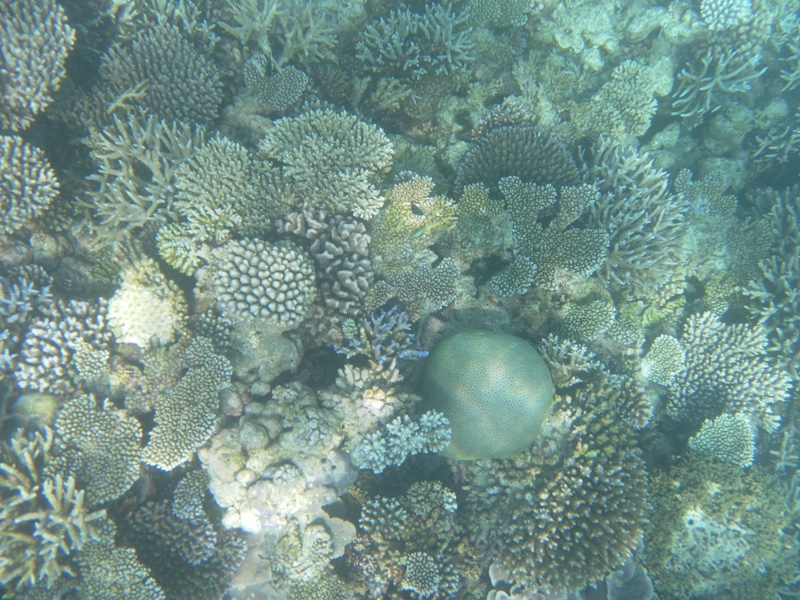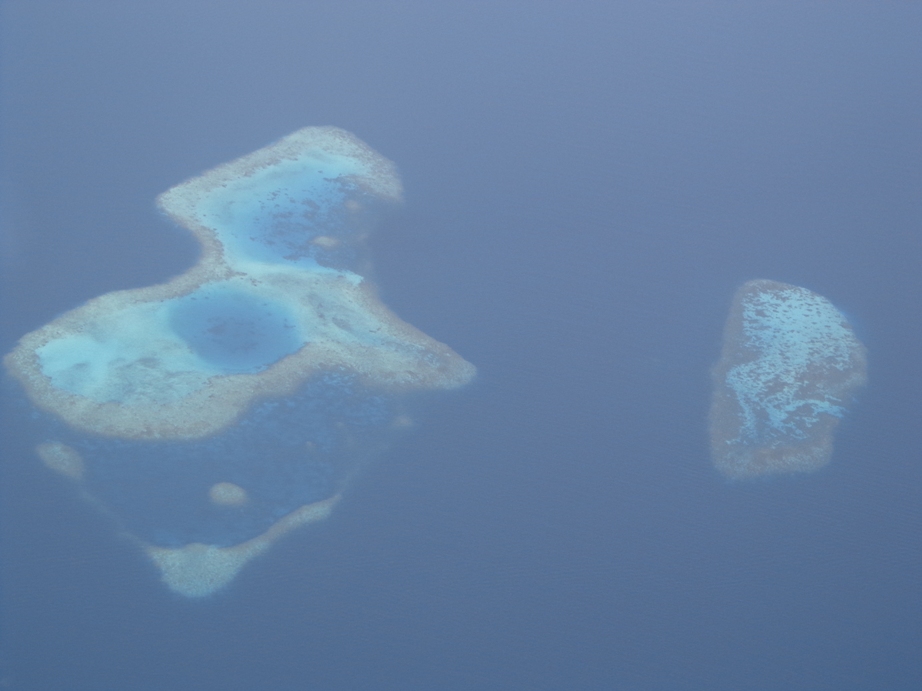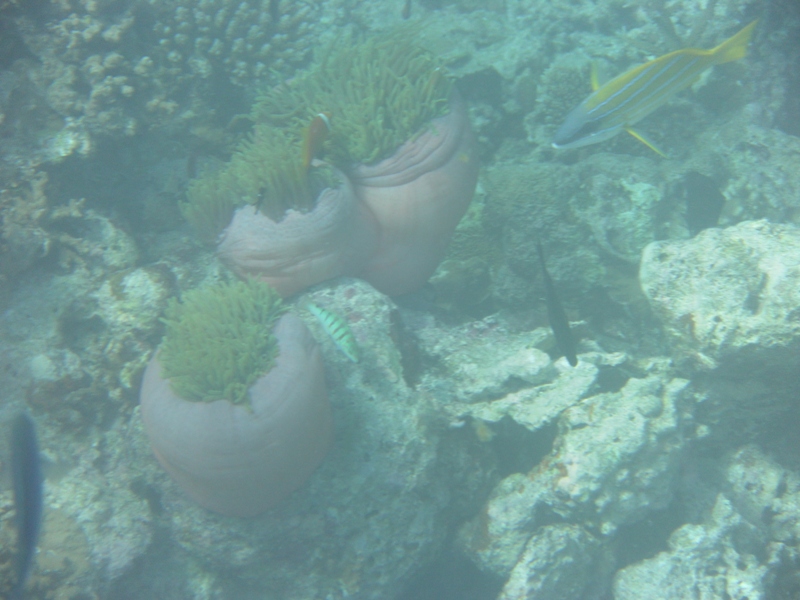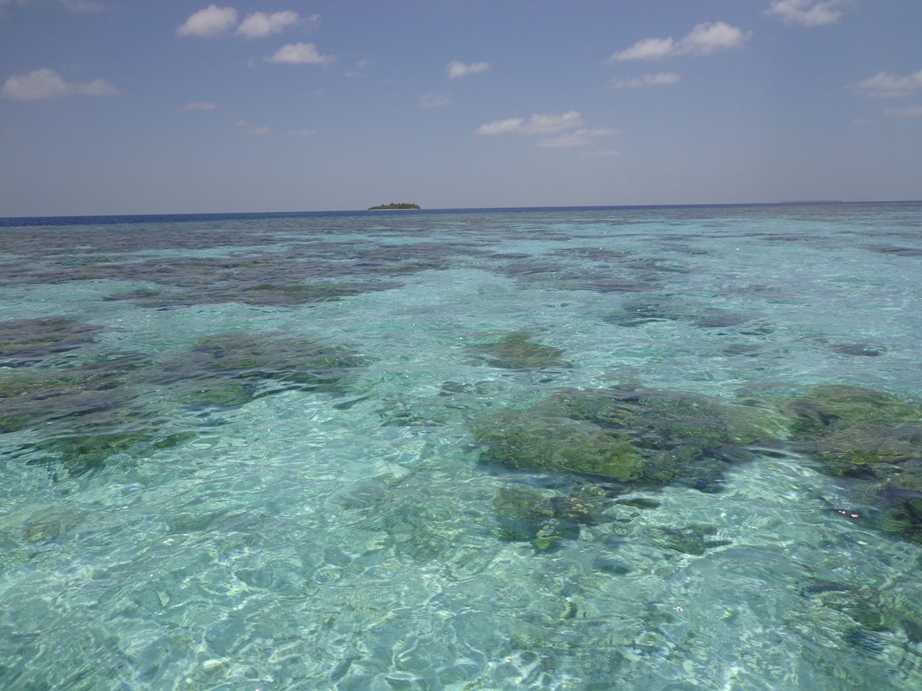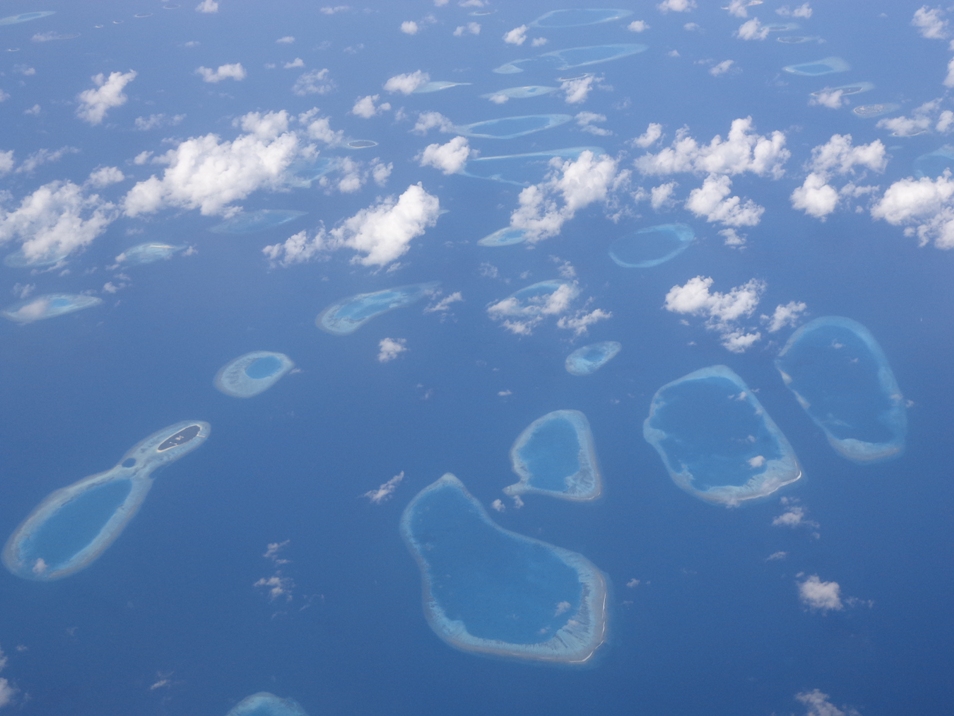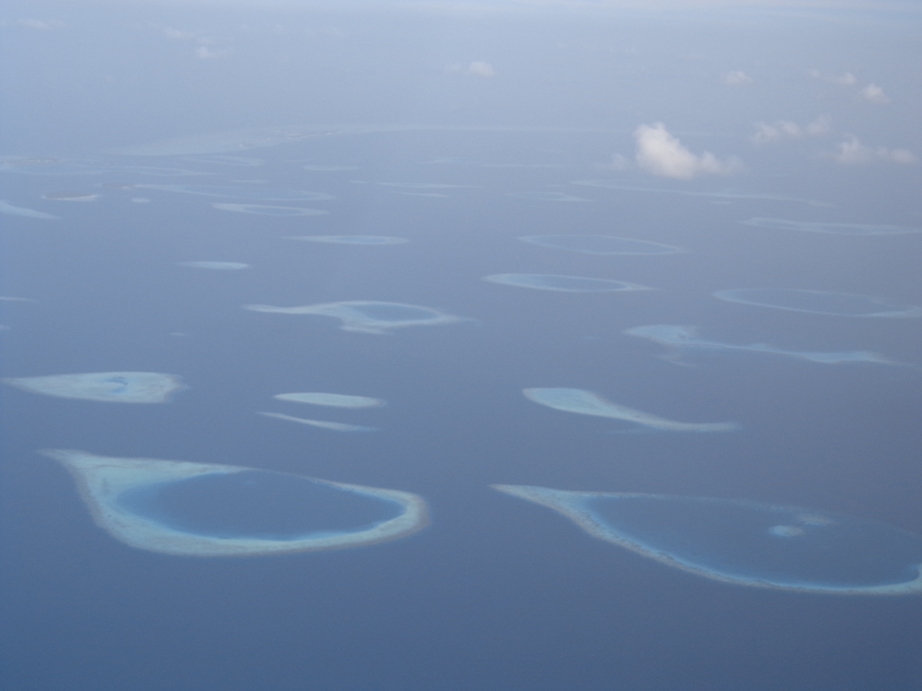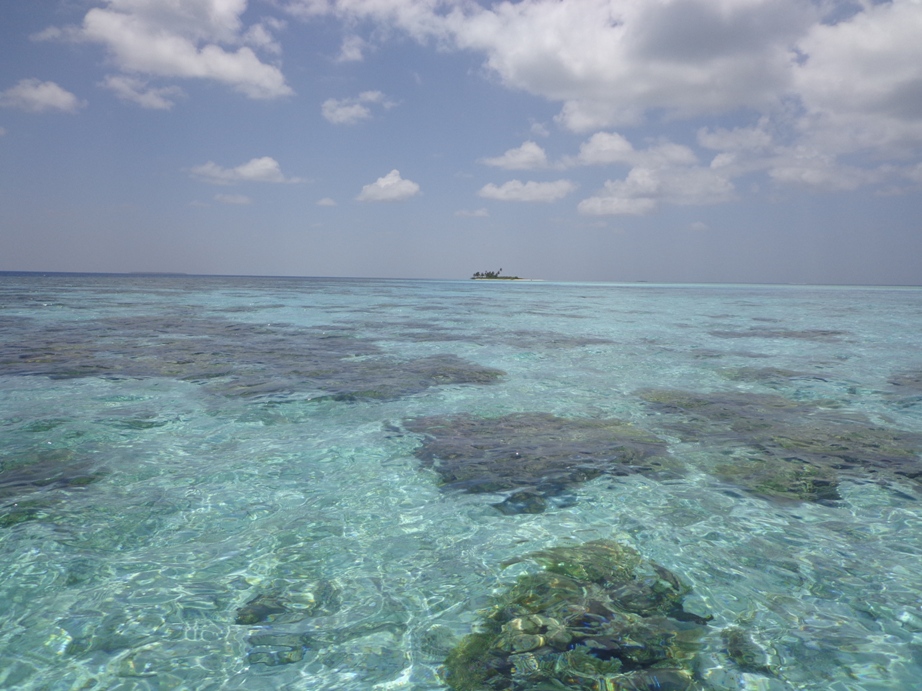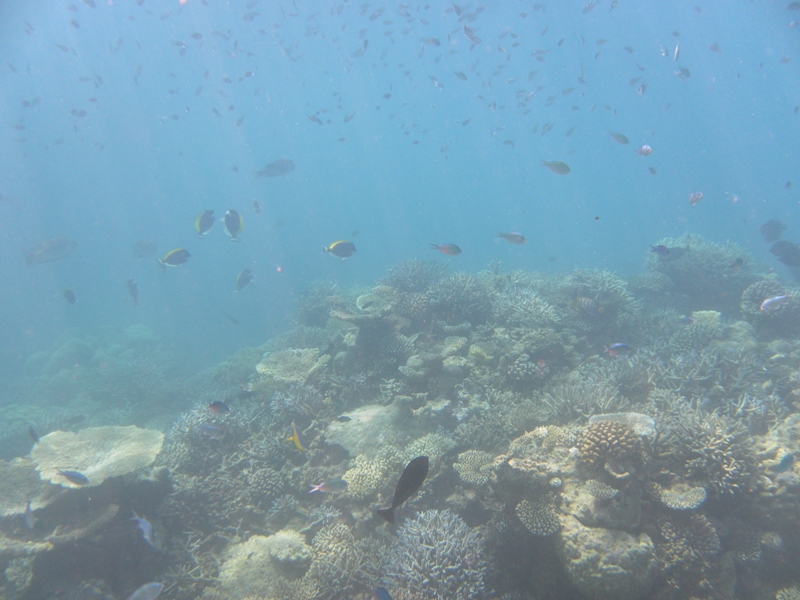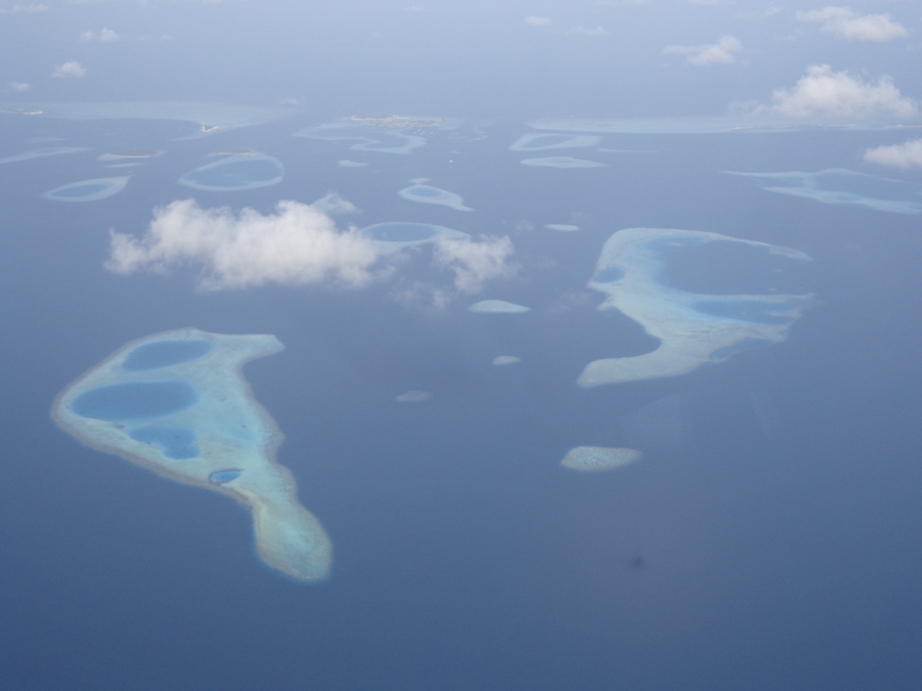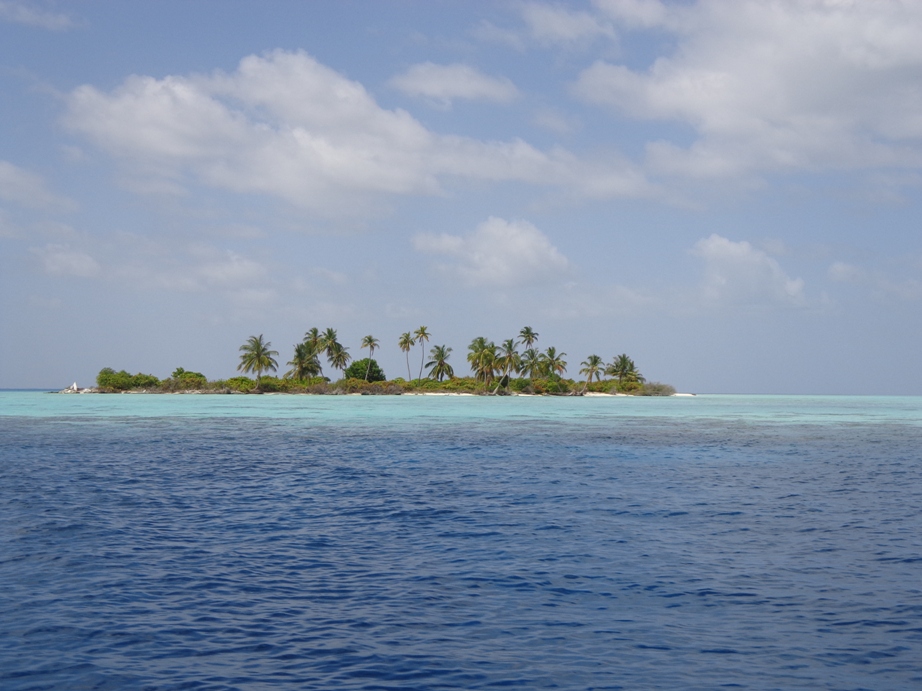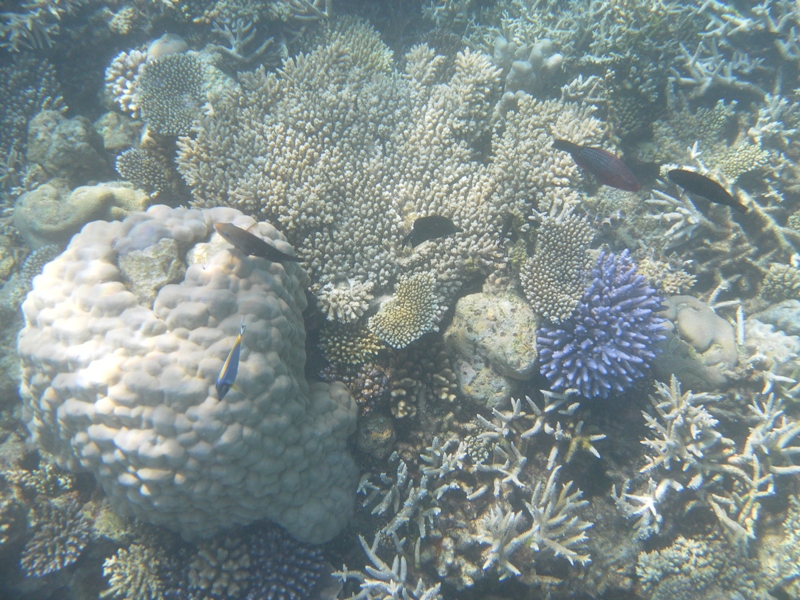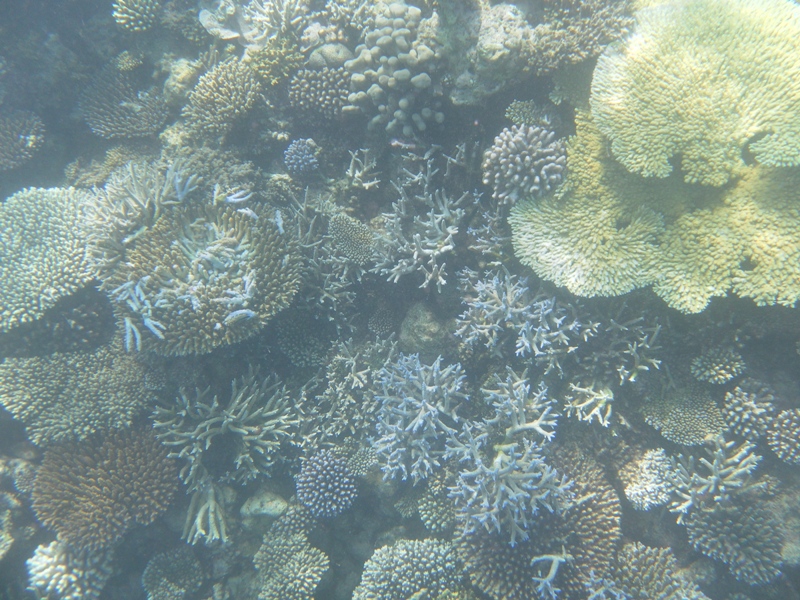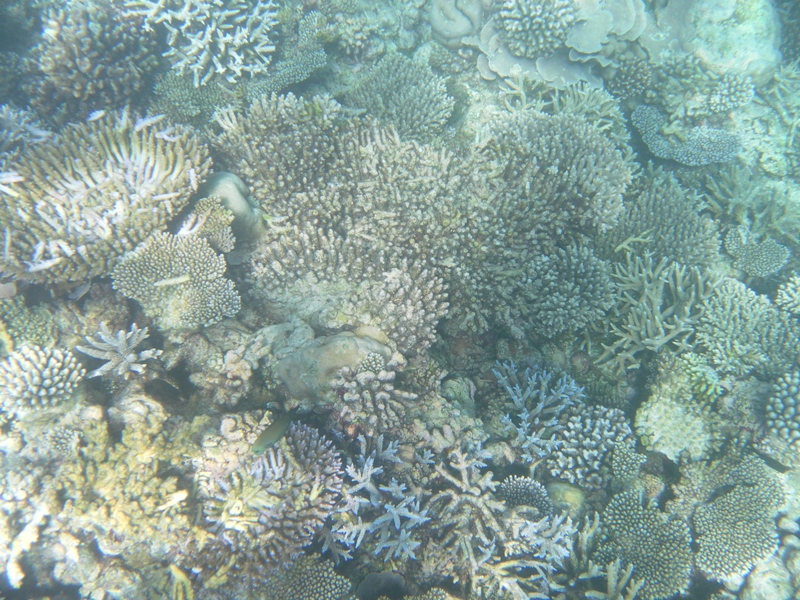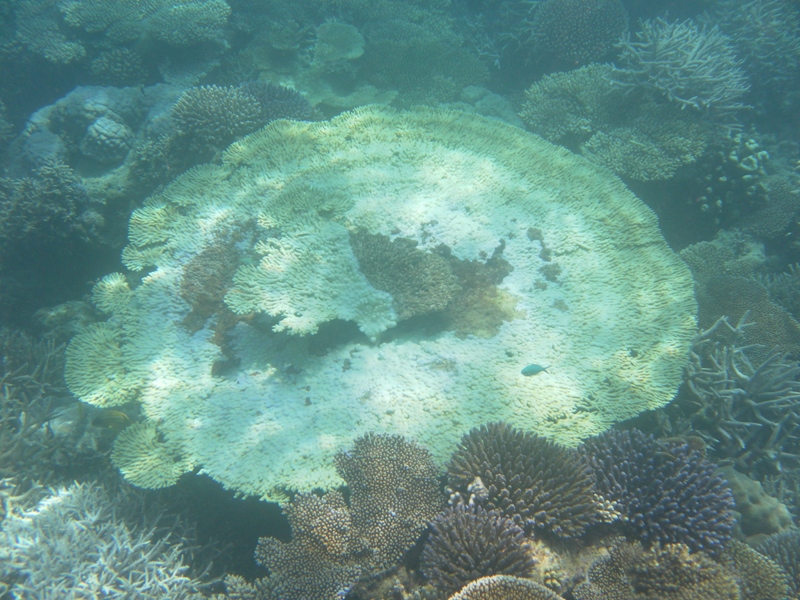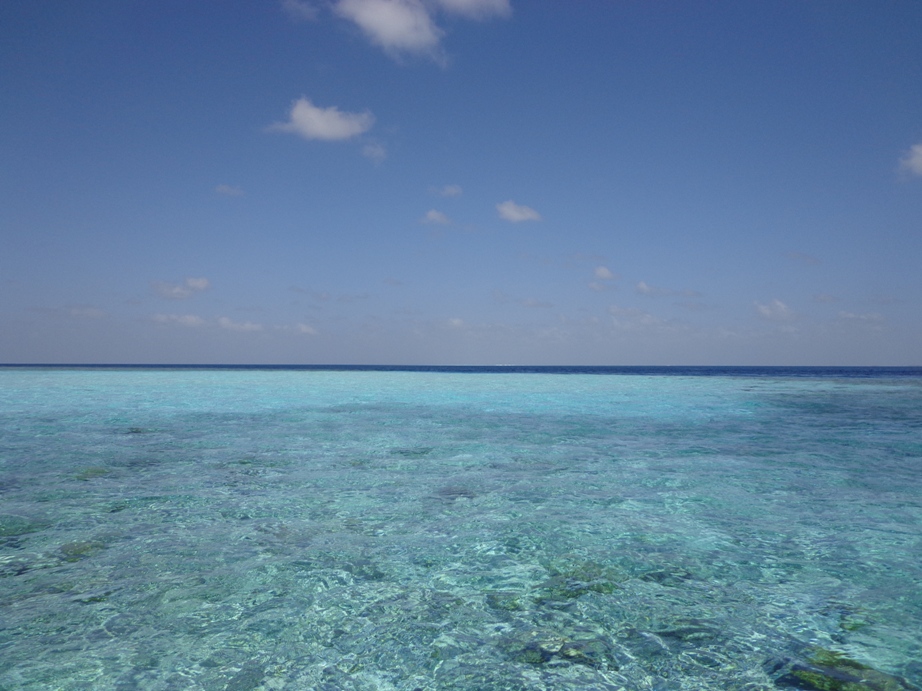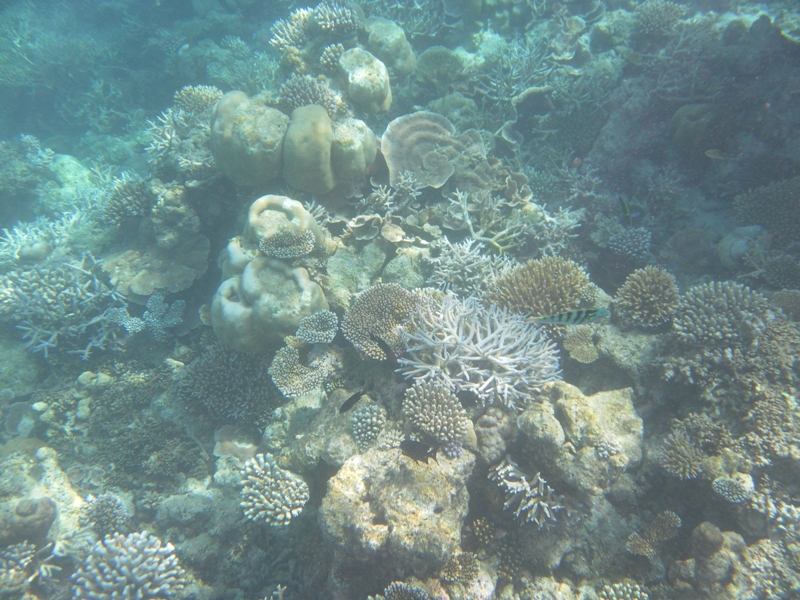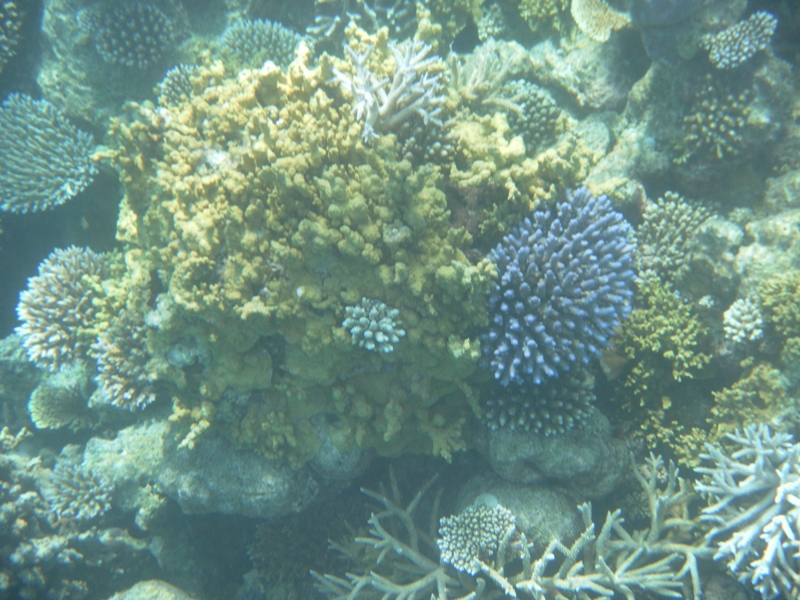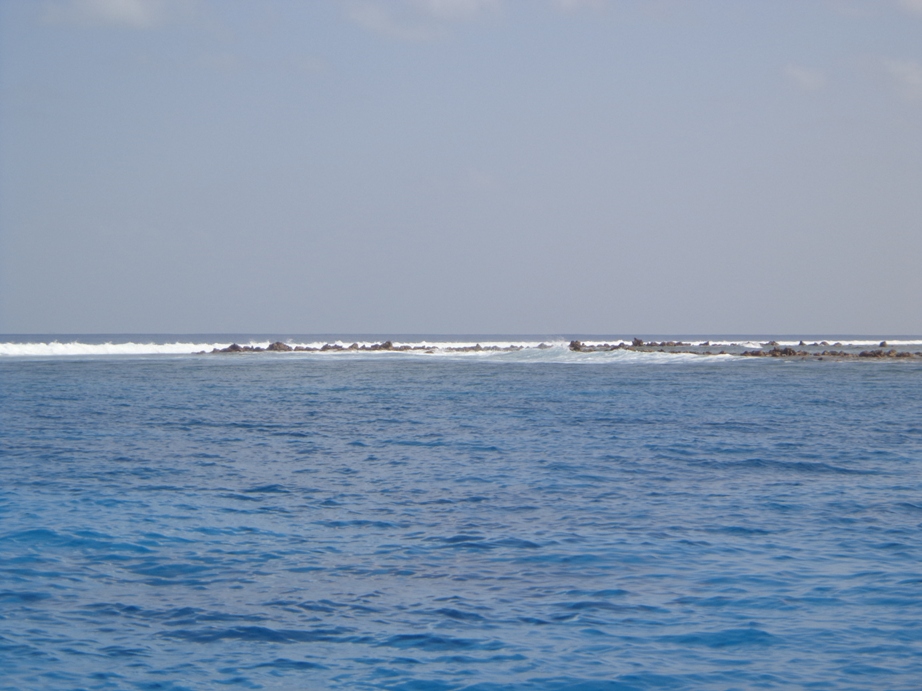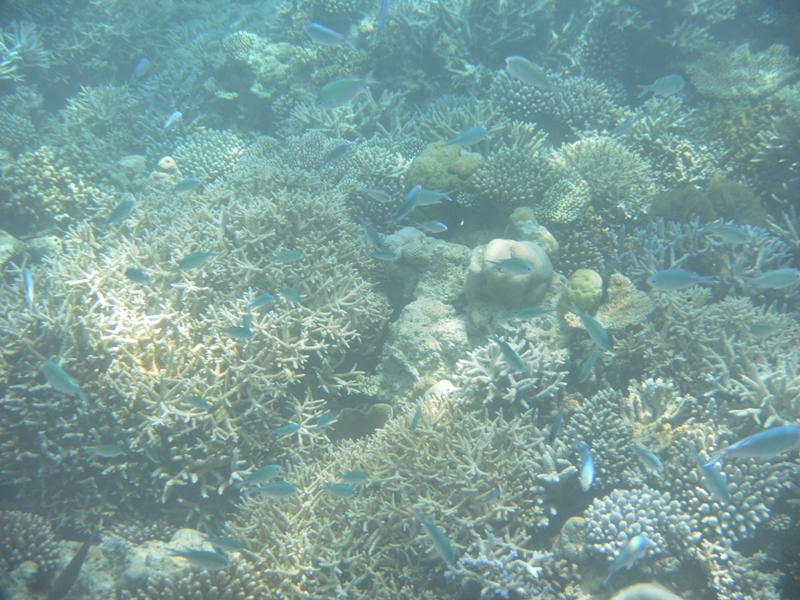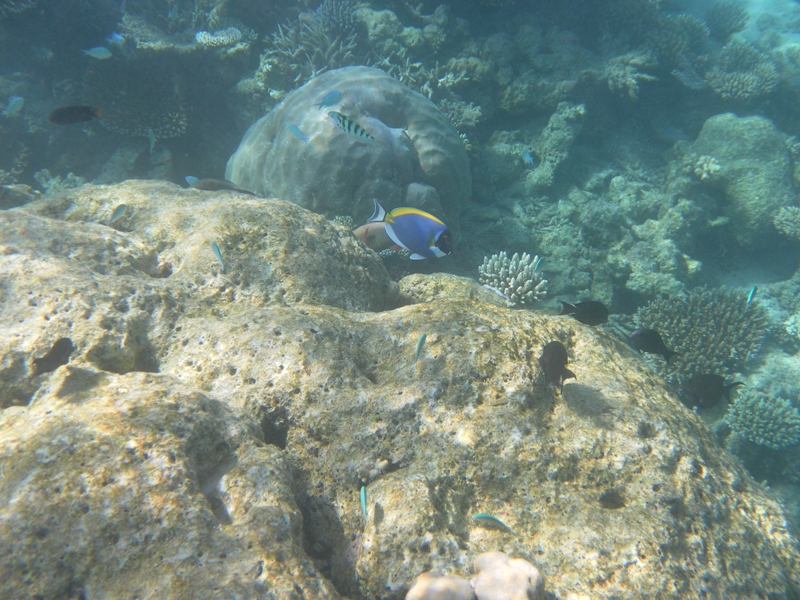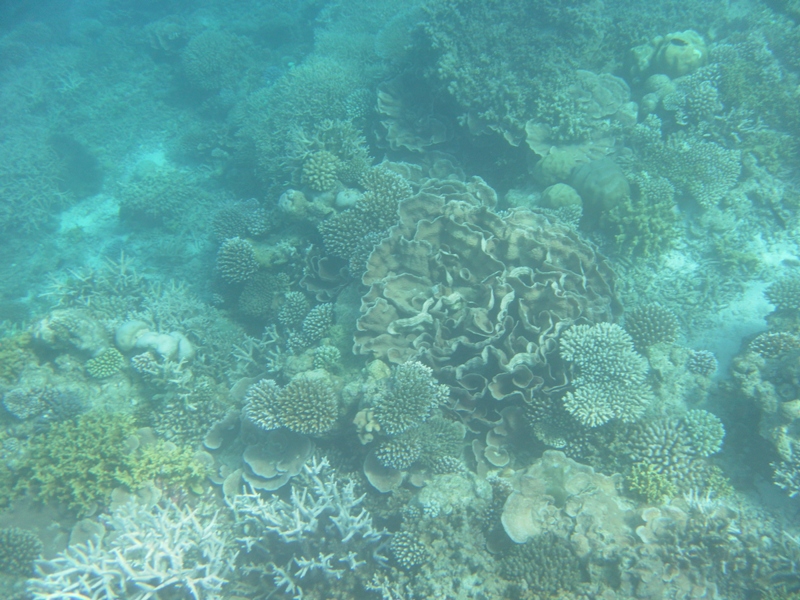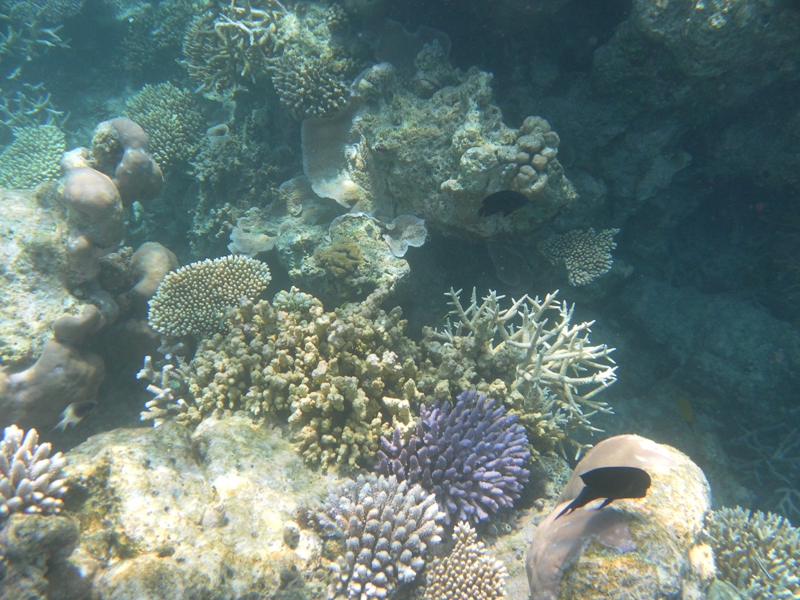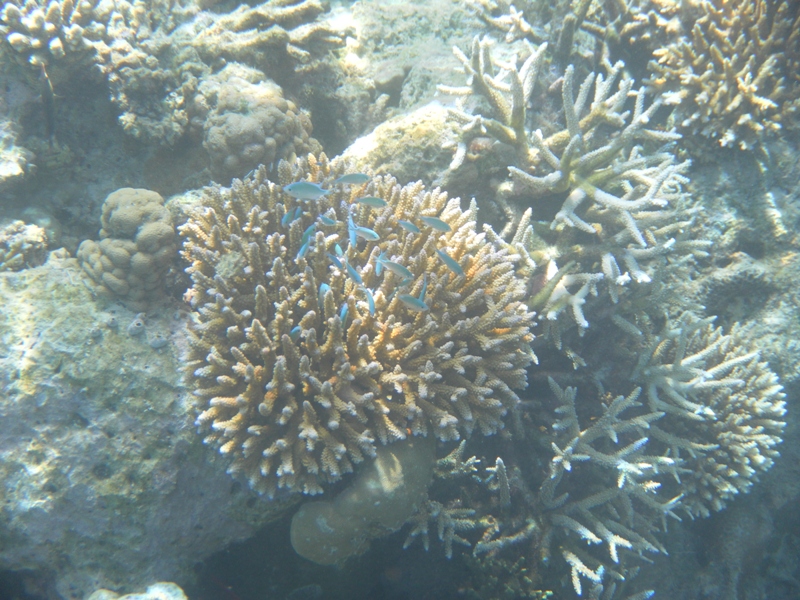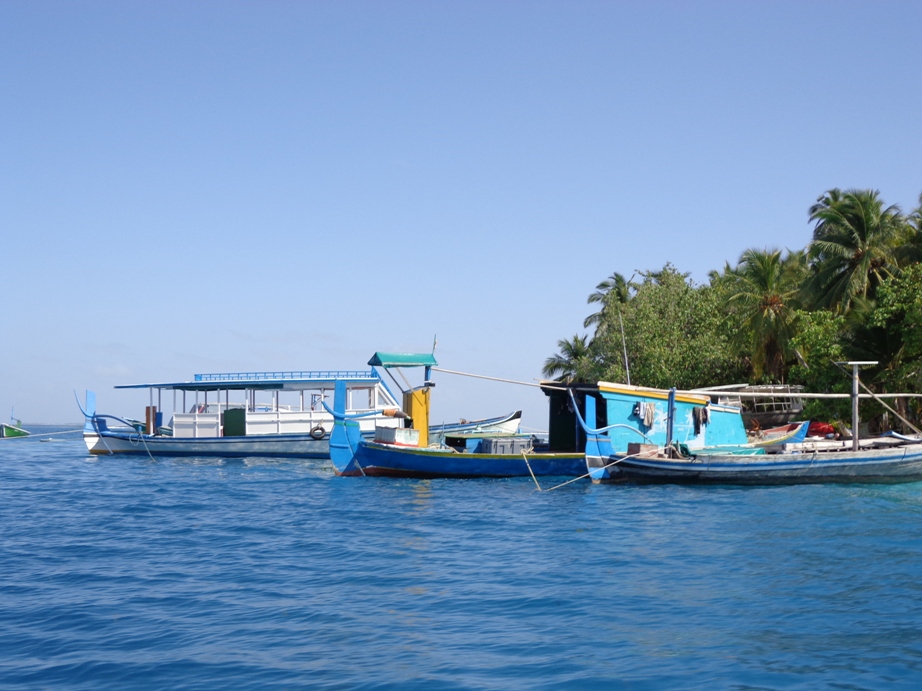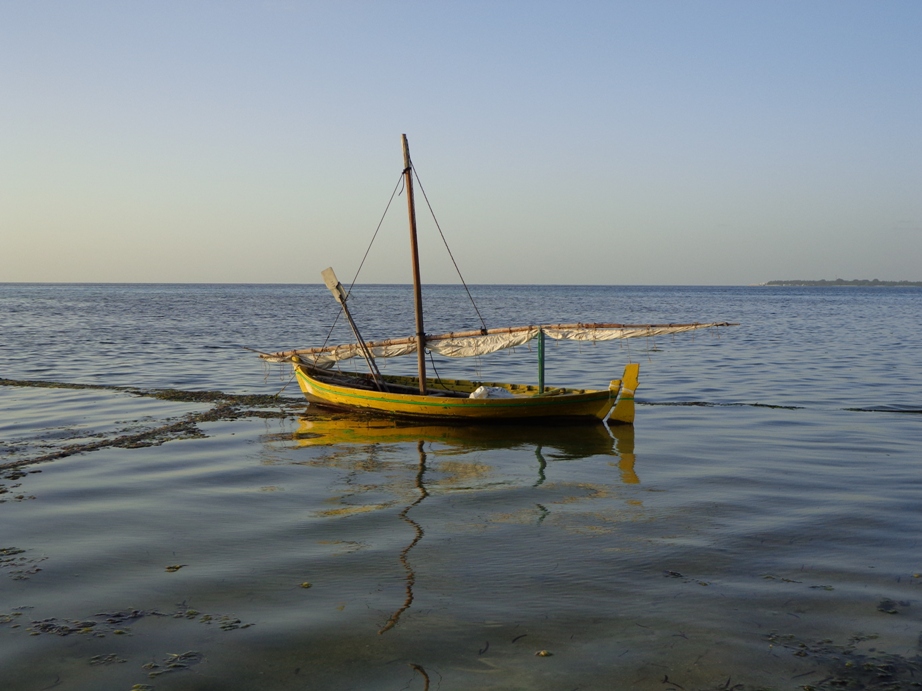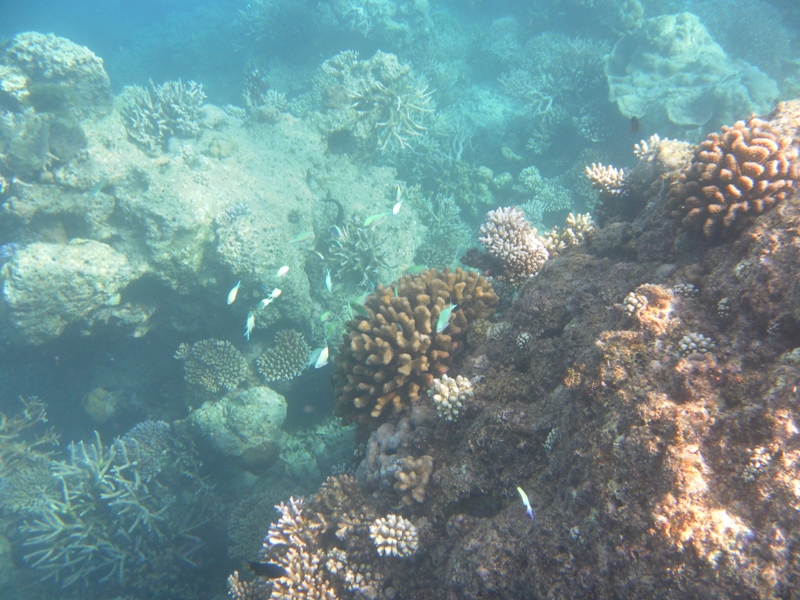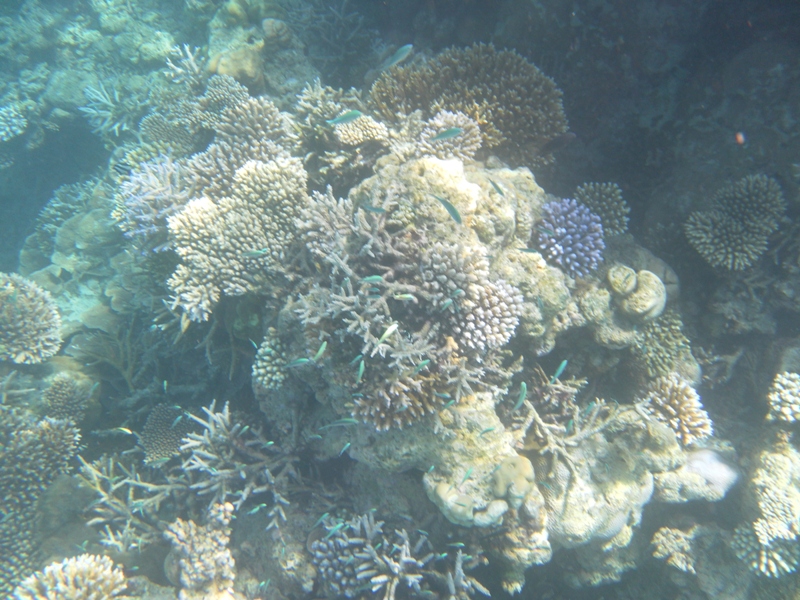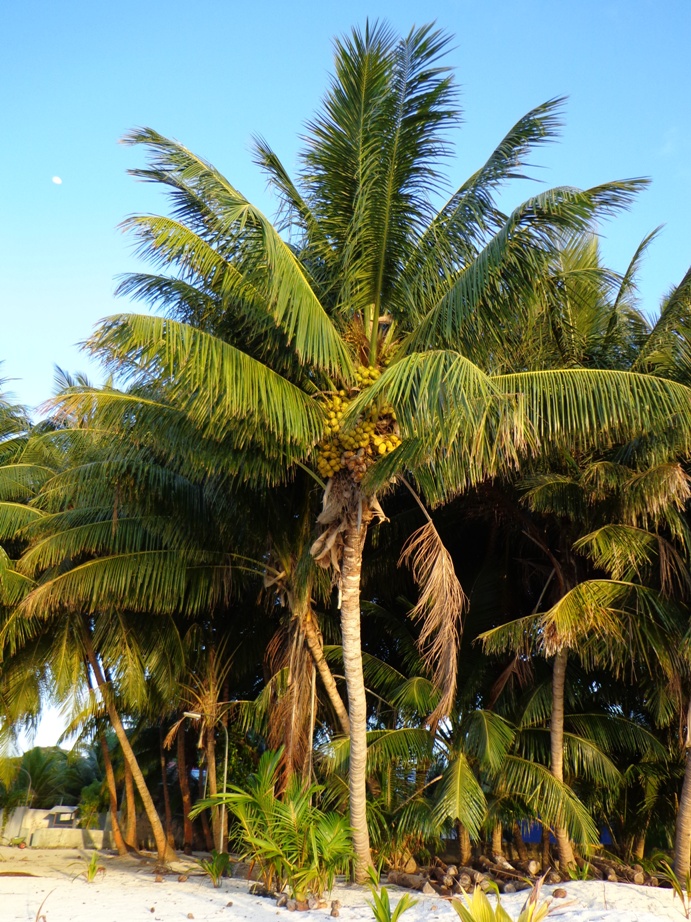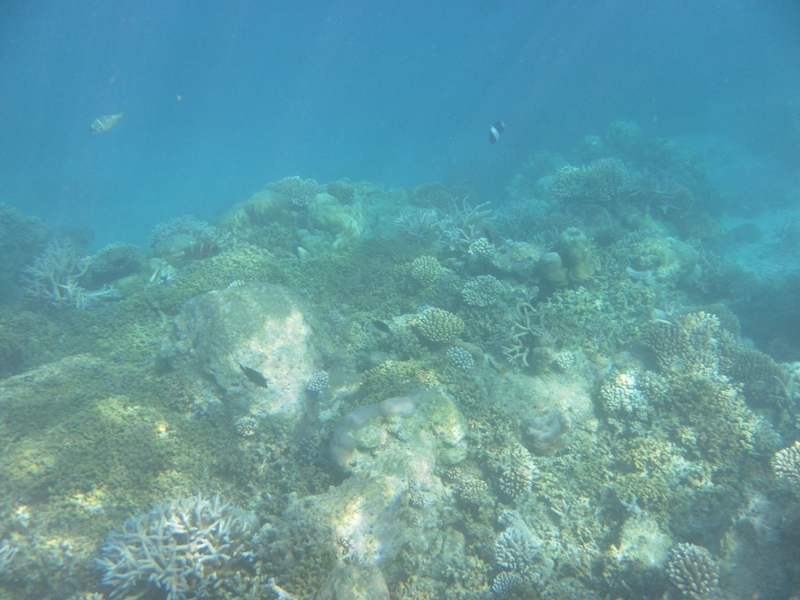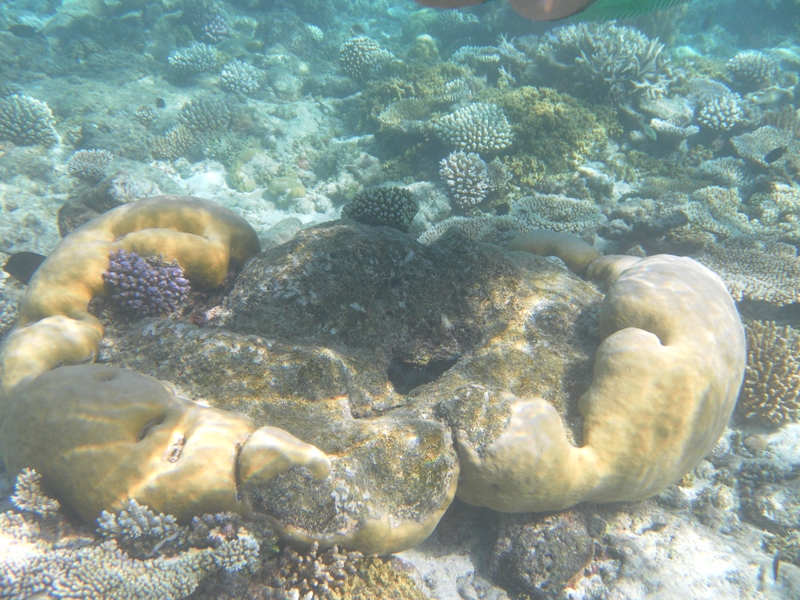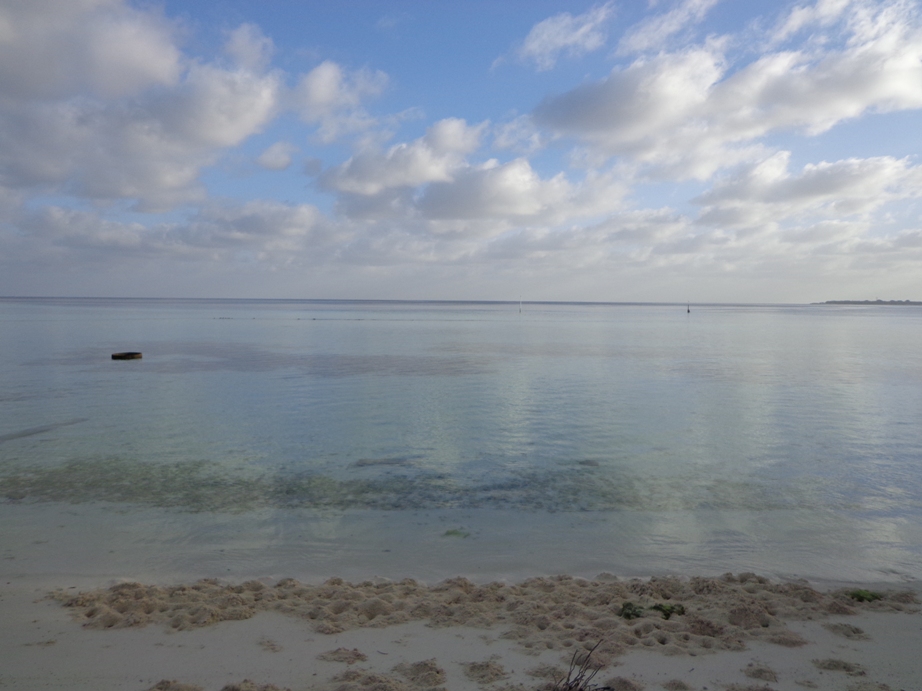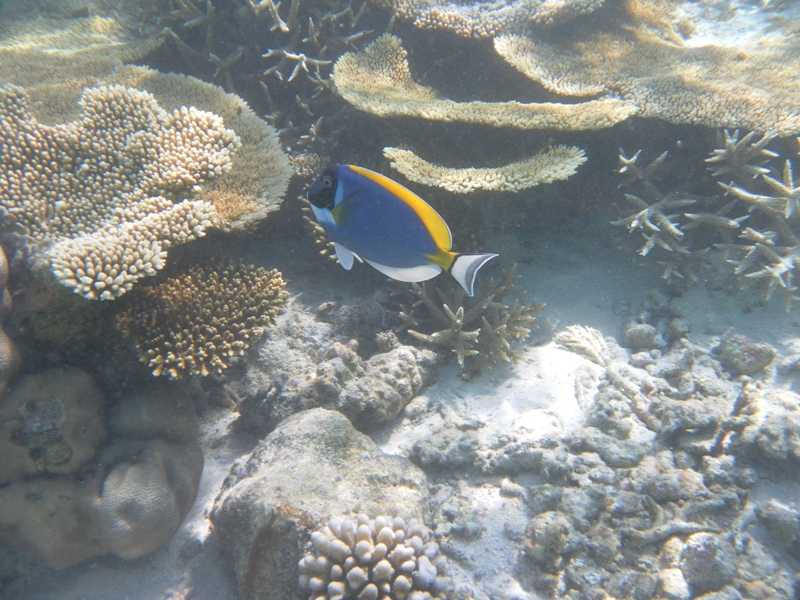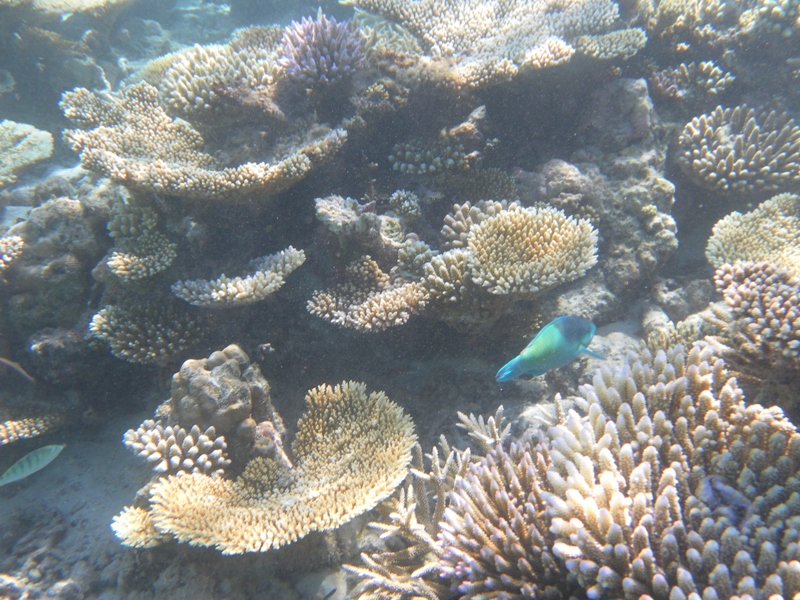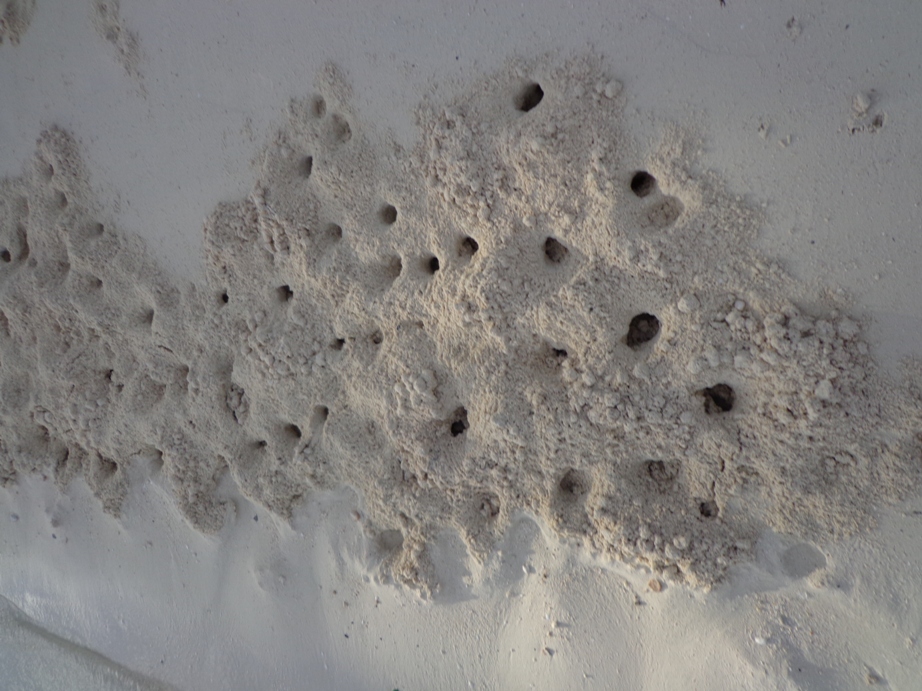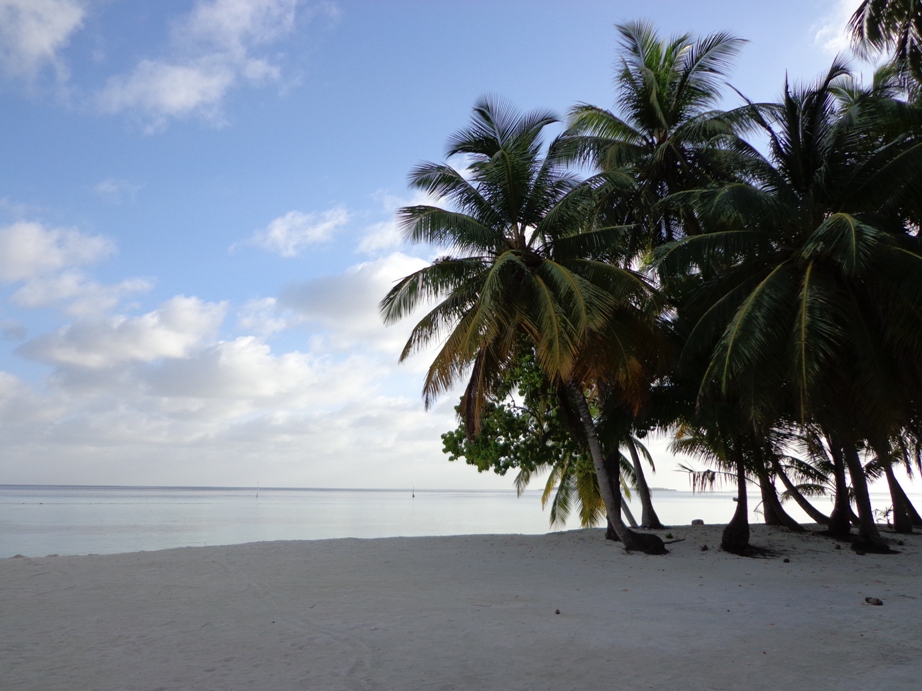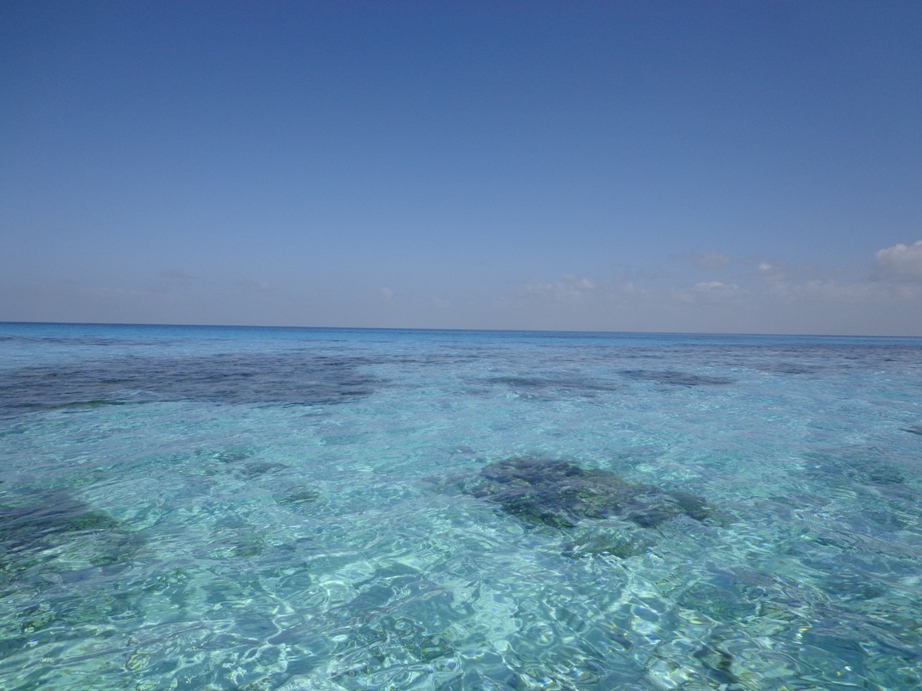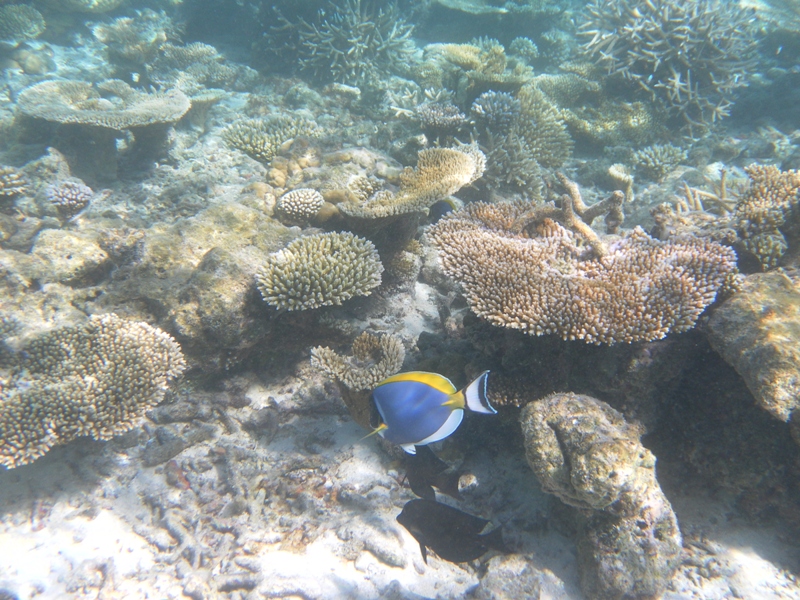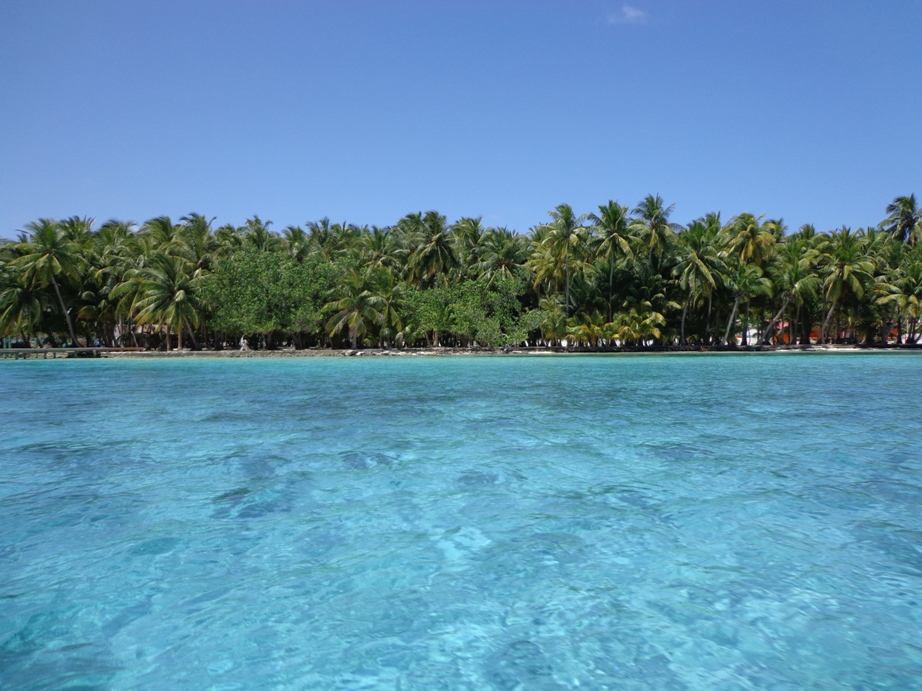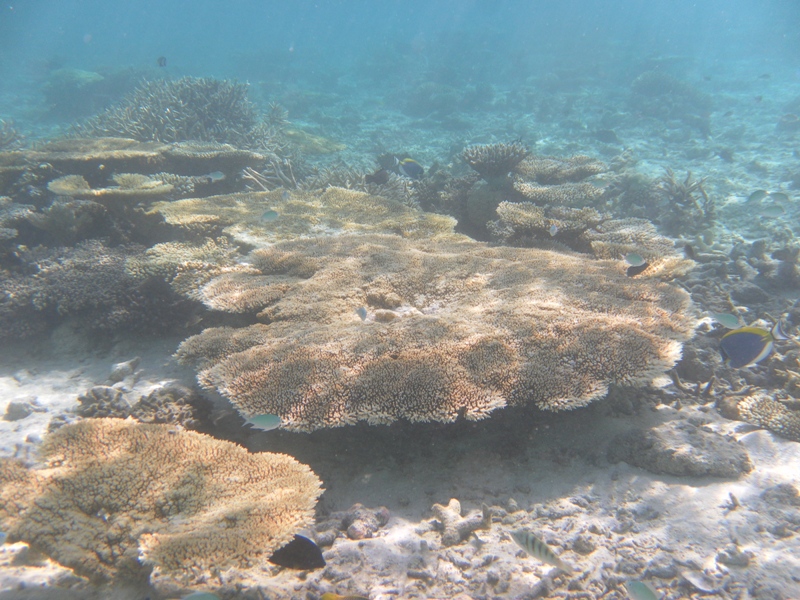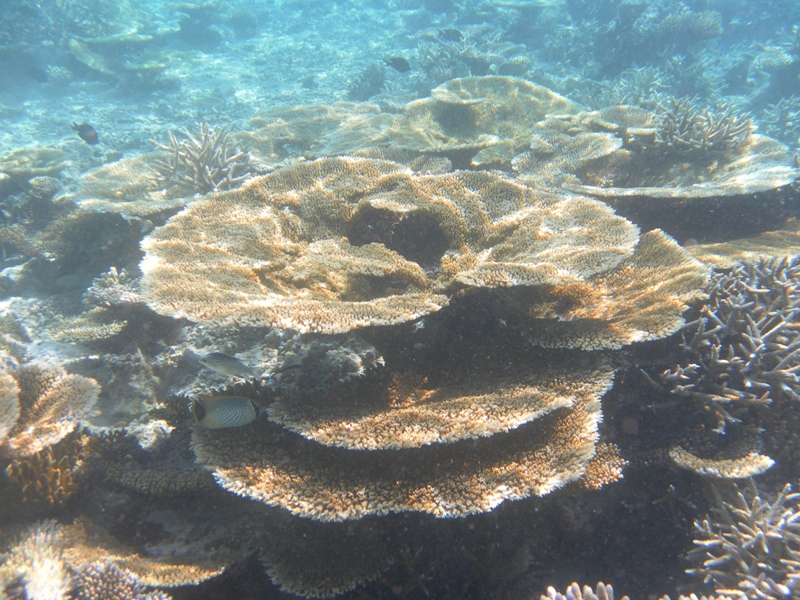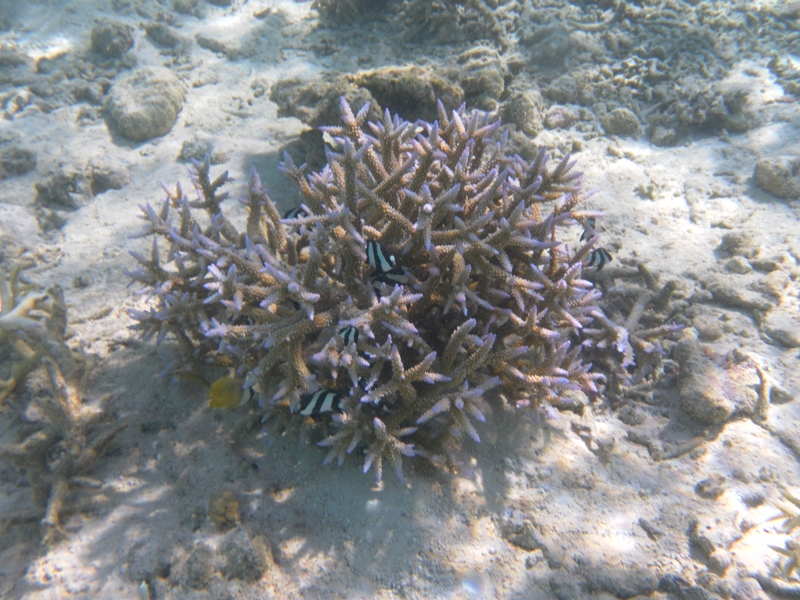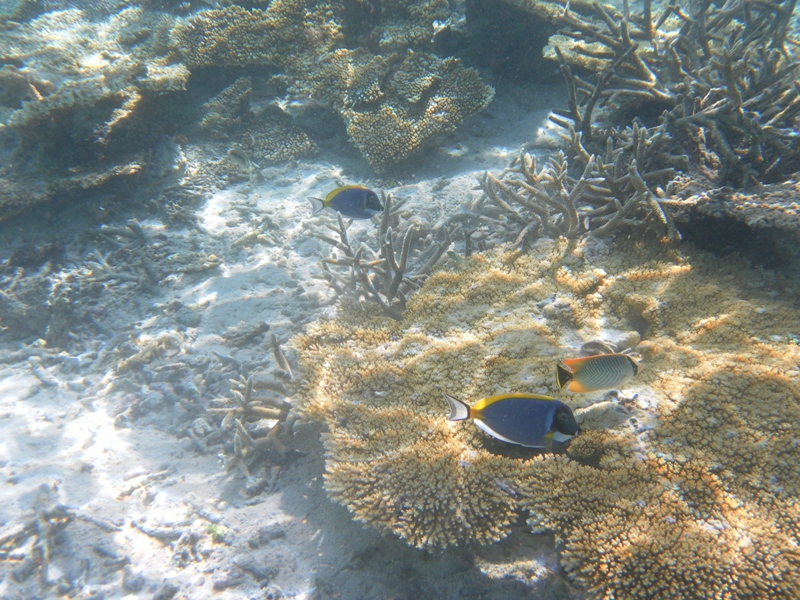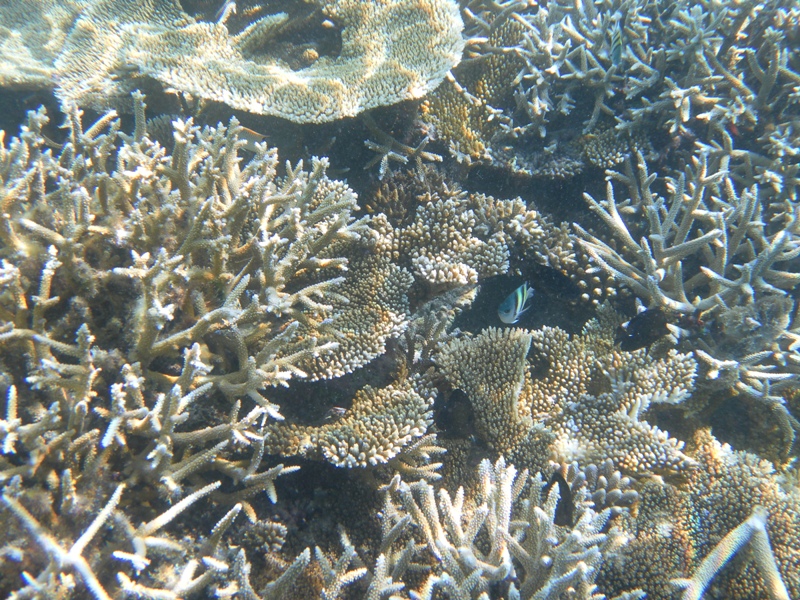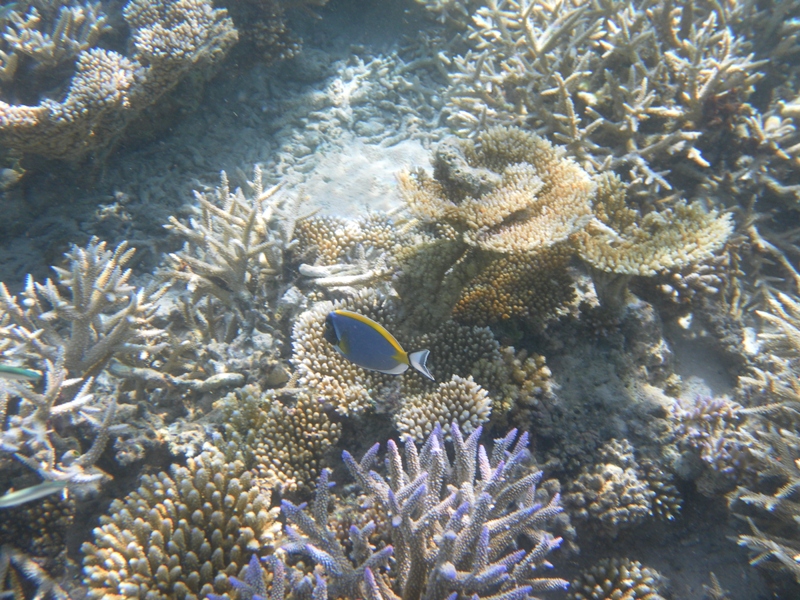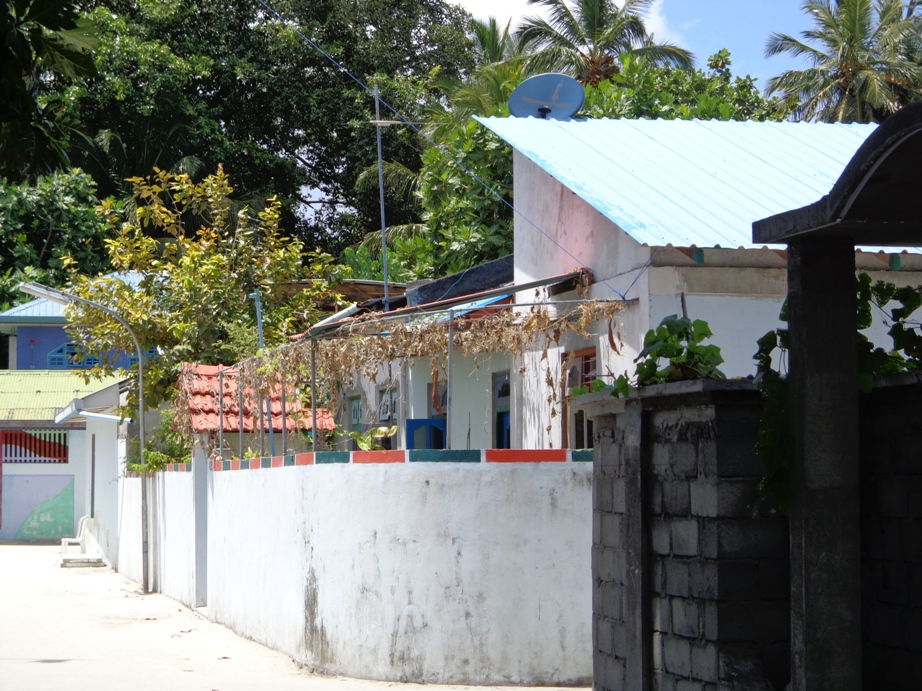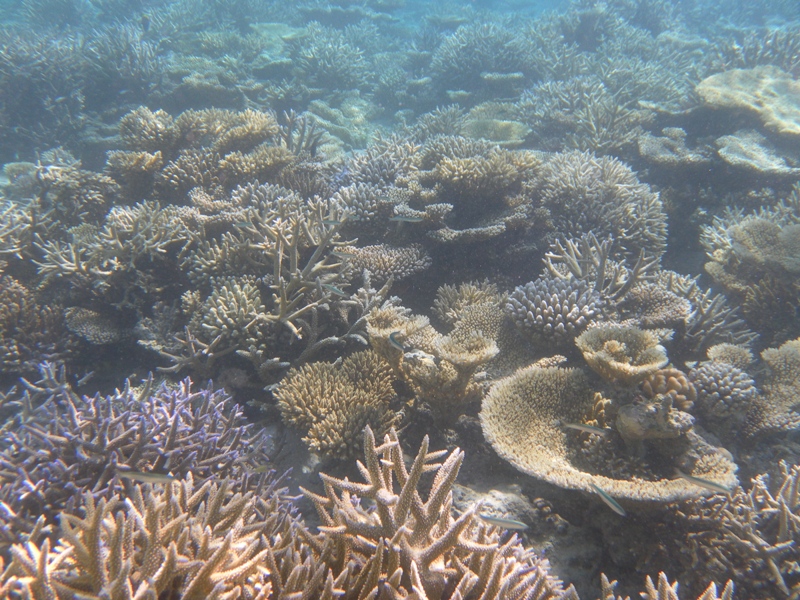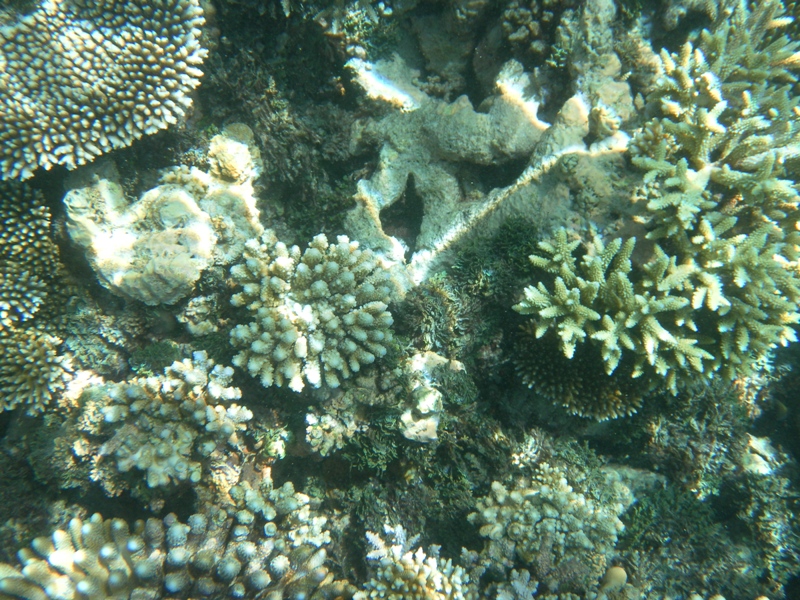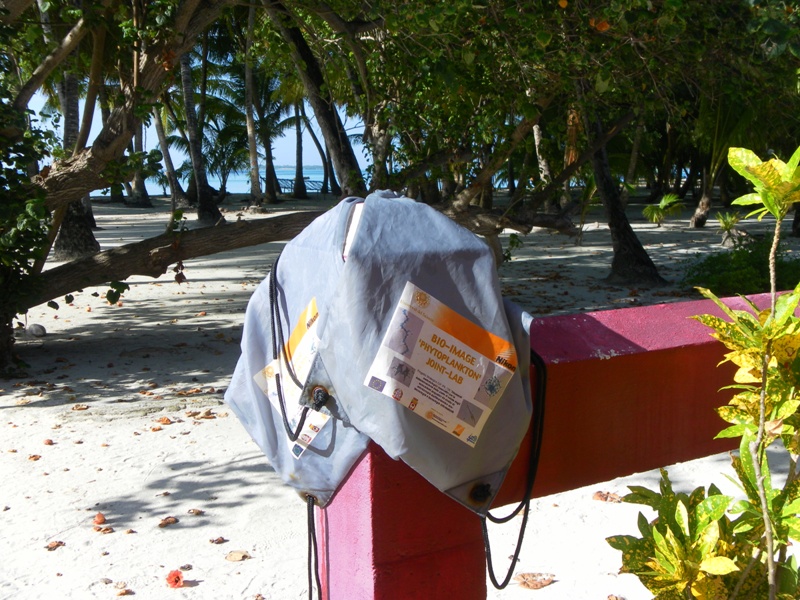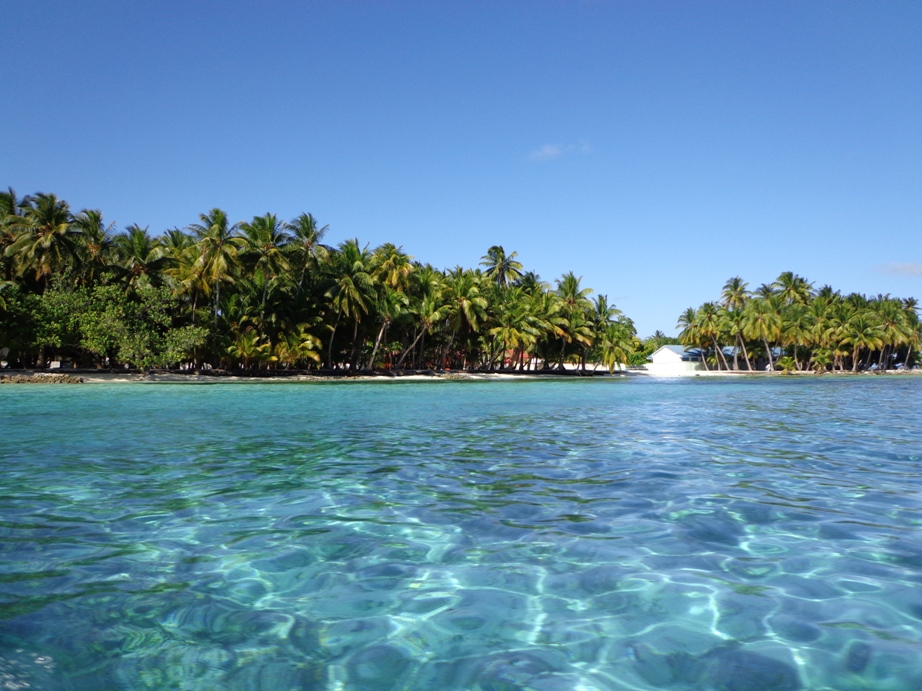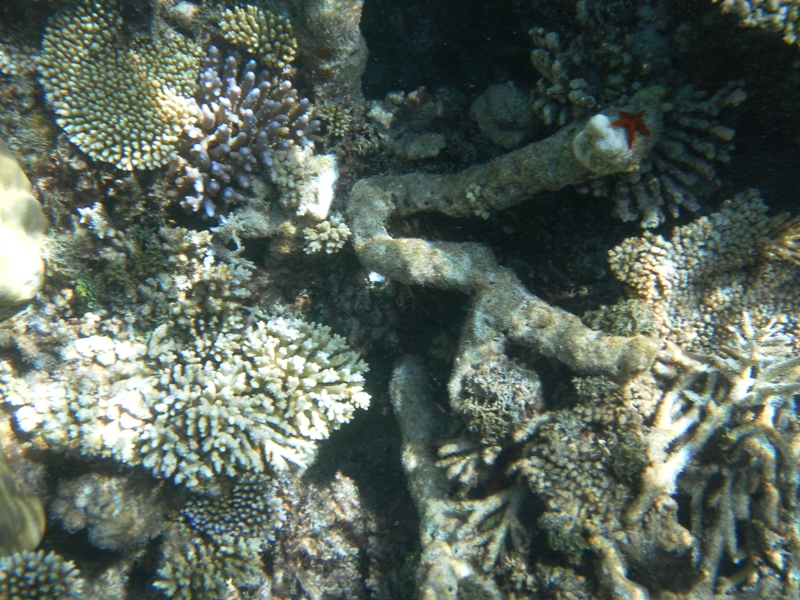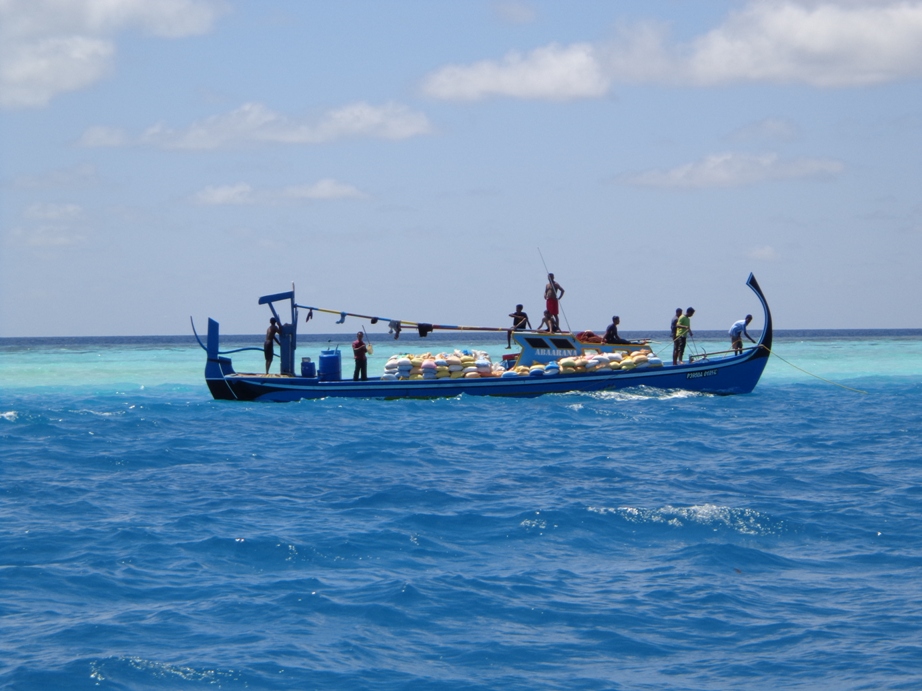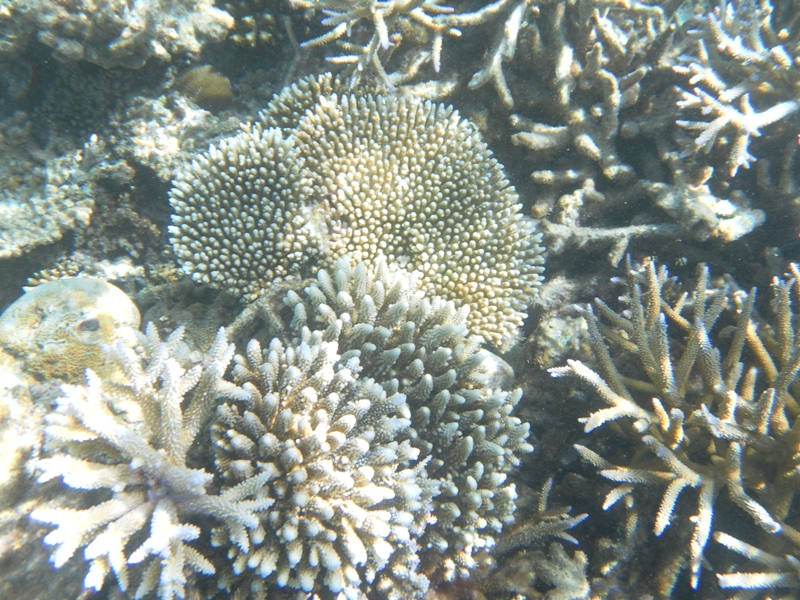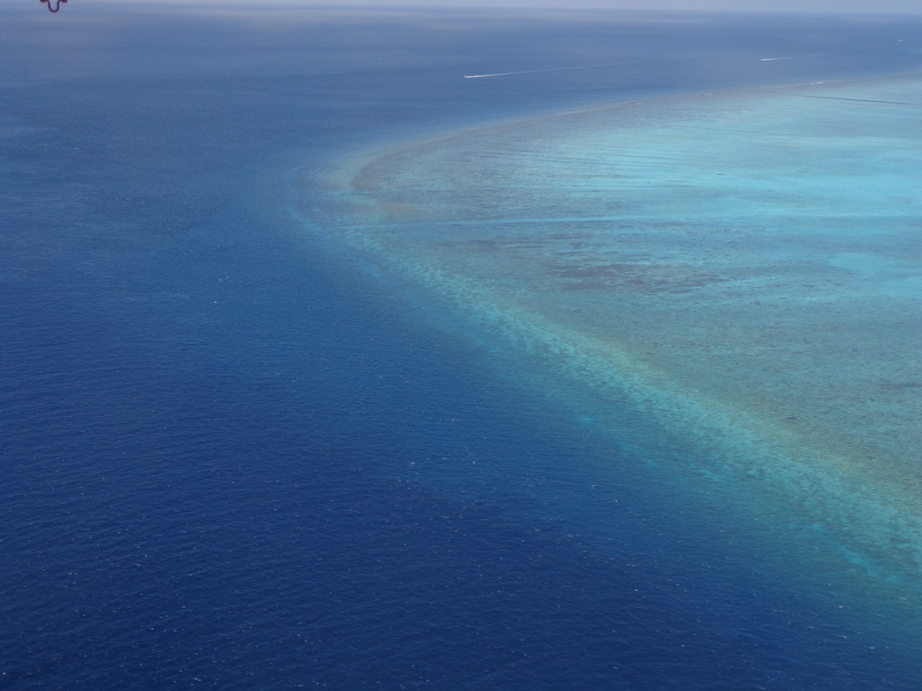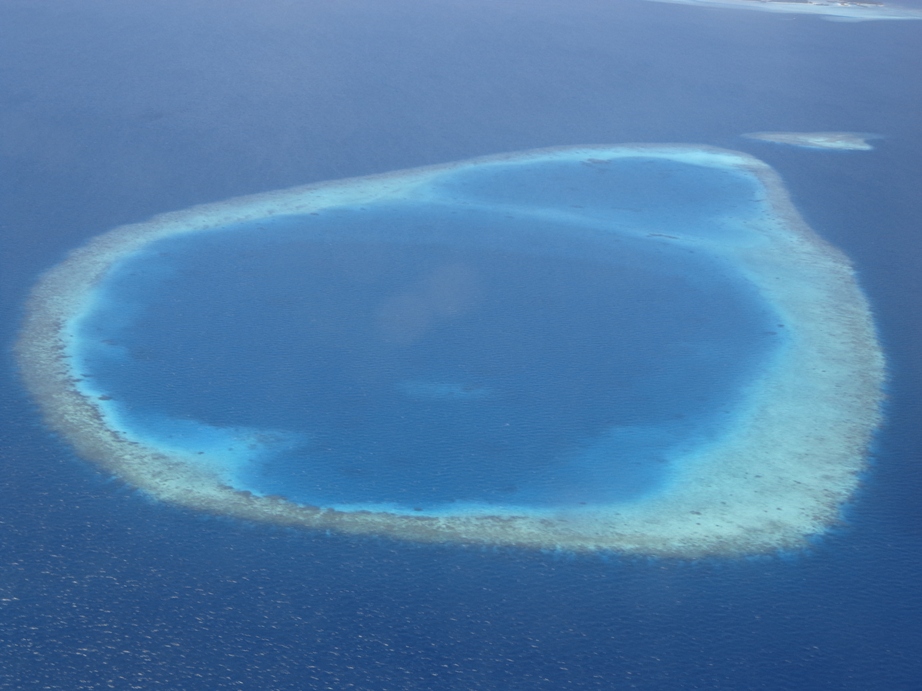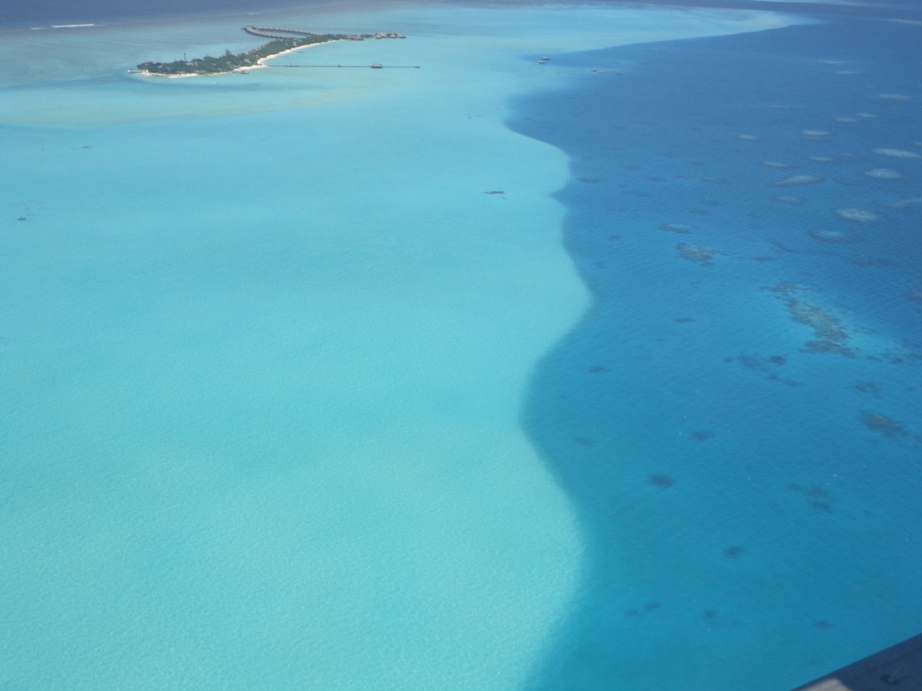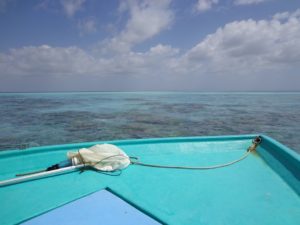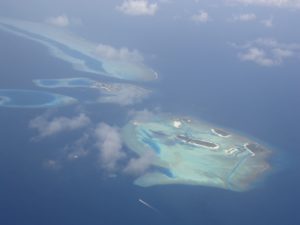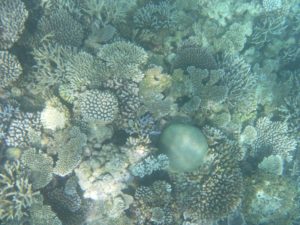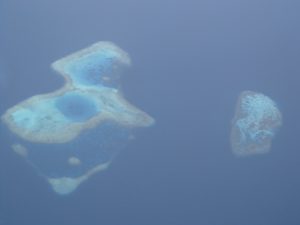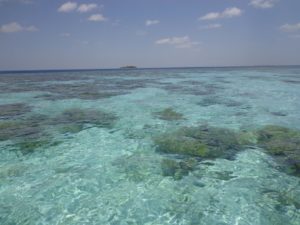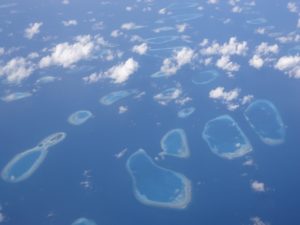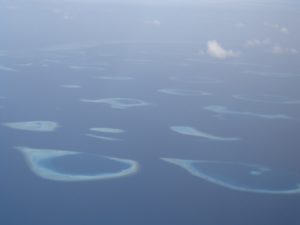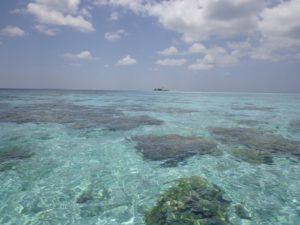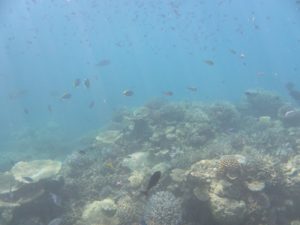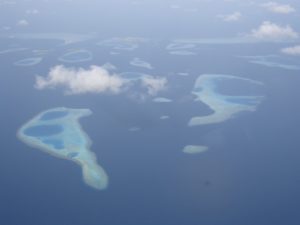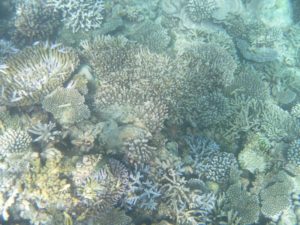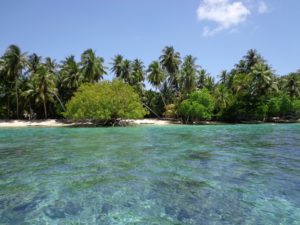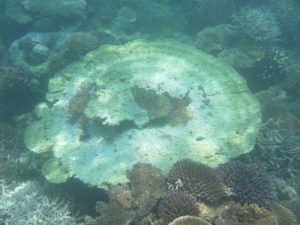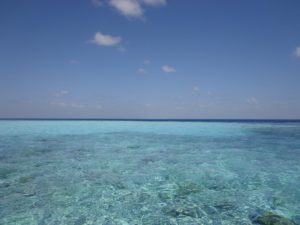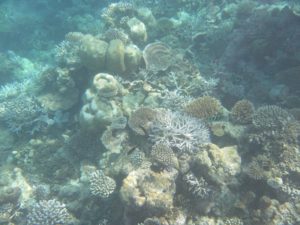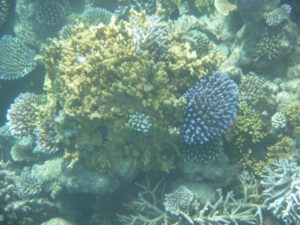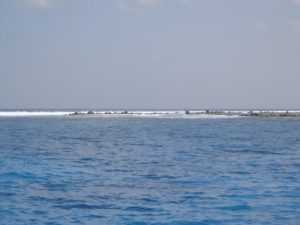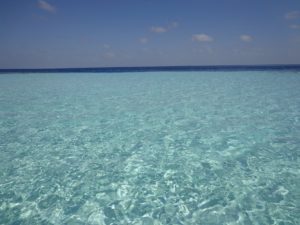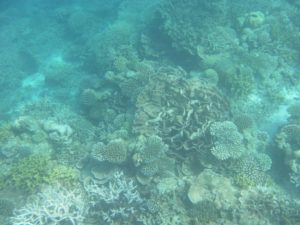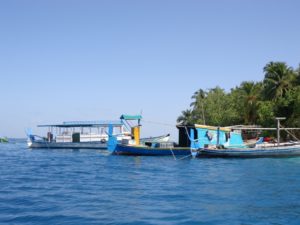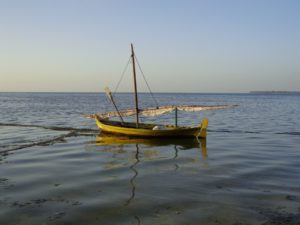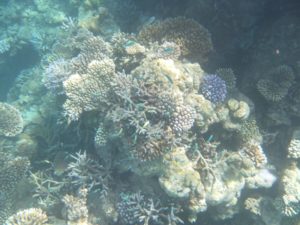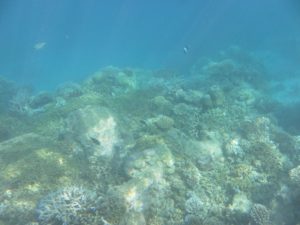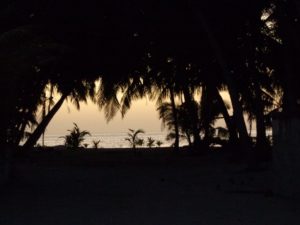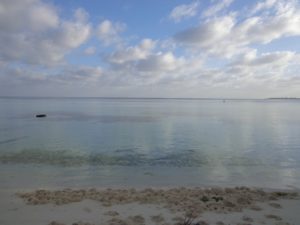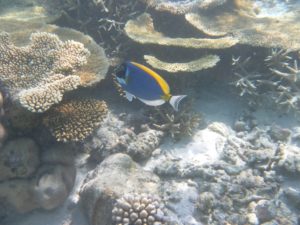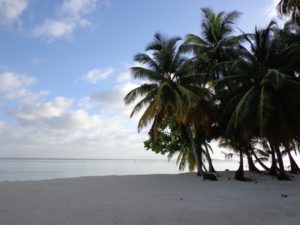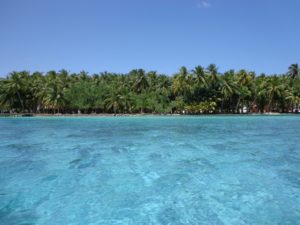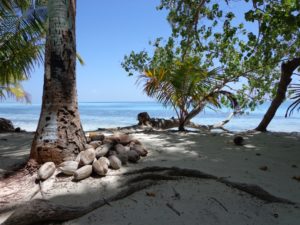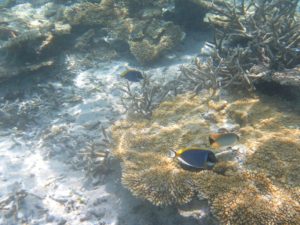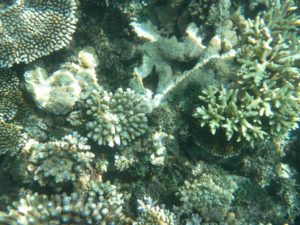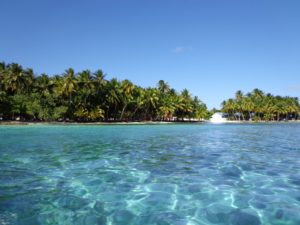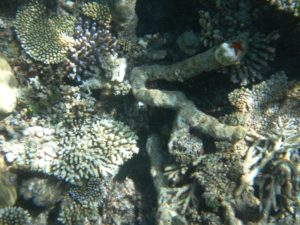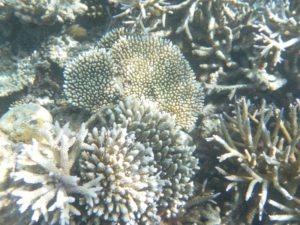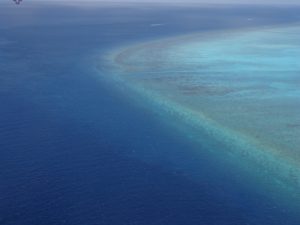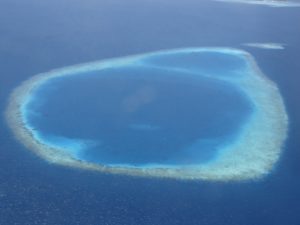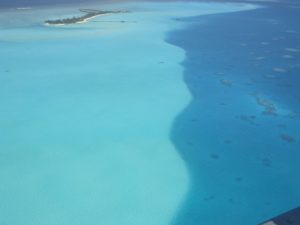Republic of Maldives - Indo-Pacific Area
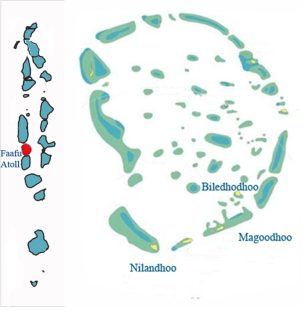
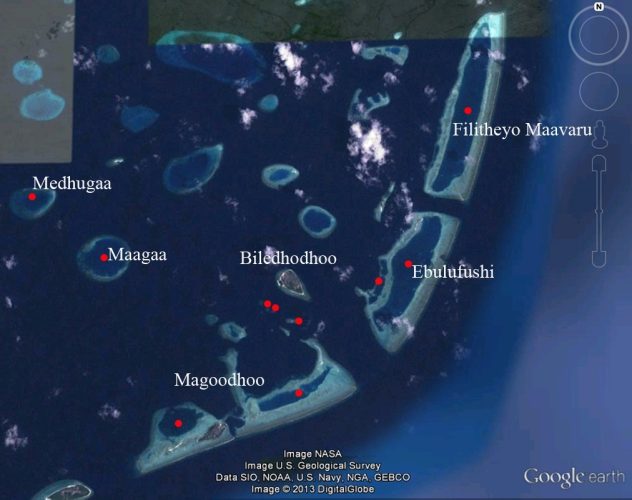
Physical features | |
Physiographic type | atoll lagoon |
Area | 900 x 450 m |
Maximum lenght | 1,5 km |
Bathymetr | from 40 to 60 m |
Wave exposur | about 0,30 m in June – 0,13 in February |
Tidal stream | irregular |
Tidal rang | 1,2-0,6 m |
Salinity | 33,8-34,7‰ |
The Maldivian archipelago is the historical archetype of a coral reef system: it is a chain of 26 atolls, rising from a submerged plateau or separated by deep ocean tracts, varying in shape (from circular to elongated) and in size (from some kilometers to many tens of kilometers). Ecosystems in the Republic of Maldives range from islands to reefs to mangroves to swamps to sea grasses and open ocean, where the diverse coral reefs form the major ecosystem.
Different hypothesis on the origin of Maldives were proposed:
– atolls would be originated by the continuous growth of a reef around a chain of subsiding island with a gradual evolution from fringing reef to barrier reef to atoll;
– could rise from modern reefs from an eroded platform produced by an eustatic drop in sea level during the last glacial period;
– rather, the origin of the atolls is specifically due to the existence of subsiding island system.
The Maldives has a warm and humid tropical climate and the annual mean temperature is about 28 °C. The Maldivian archipelago is characterized by two monsoon periods, particularly in the north: the South- West monsoon during summer (from April to November) and the North- East monsoon during winter (from December to March). This seasonal monsoonal circulation generates oceanic currents directed eastward in summer and westward in winter, these currents are deviated by the complex morphology of the atolls, producing a very articulated surface circulation pattern and giving the peculiar symmetry to the Maldivian atolls and reef complexes.
The international word atoll derives from the Maldivian word atolu, firstly used for the reef in the Indian Ocean and later extended also to the systems occurring in the Central Pacific Ocean sharing similar features. Every Maldivian atoll is formed by a marginal rim surrounding a lagoon commonly 40- 60 m deep and interrupted by deep channels, which lead to strong water circulation inside the lagoon, encouraging the development of many patch reefs. Atolls and their associated rim reefs, lagoons and lagoon reefs vary tremendously in their formation, size and physical setting.
The atoll rim can be continuous (ribbon reefs) without gaps for tens of kilometers or discontinuous with reefs of different shapes (cuspate, prong, circular, elongated) perpendicular to the margin and separated from each other by oceanic passes; the depth of adjacent oceans are not very significant for the shape of the marginal reefs. Read More
The oceanward margin of the atoll rim shows more or less steep terraced slopes and it can be bio-constructed or erosional.
- Bio-constructed margins are characterized by: steep slope, extended and variable wide reef flat with an high diversity of coral building associations, large lagoon with scattered coral colonies and bioclastic sand bars.
- Erosional margins are made up of a rocky flat, which deepest portion is locally colonized by encrusting associations, massive corals and scattered colonies of Heliopora and Millepora; the innermost part of the erosional margin of atoll rim is called algal rim, commonly shows a framework of grooves, inherited from a preexisting topography, with bioclastic sand, gravel and well-rounded boulders.
The lagoonward margin of the atoll rim has an irregular shape; it is formed by reefs with well- developed and diverse reef-building coral associations which differently slope toward the sandy lagoon of the atoll.
The ocean passes (“kandu” in Maldivian language) are gaps of different width in the atoll rim which allow communication between the atoll lagoon and the ocean; their walls are steep, vertical and colonized by reef-building coral association. The depth is generally less than the maximum depth of the lagoon. The oceanward part of the deepest passes consists of a rocky floor with scattered colonies of coral builders, a large development of branching colonies of hermatypic scleractinians, stony corals which build reefs and colonize the shallower part of the oceanward passes. The floor of the passes toward the lagoon is covered by bioclastic sand and gravel deposits often organized in longitudinal or transverse bars and dunes.
The atoll lagoon is dish-shaped but the floor is very irregular with many patch reefs; it is covered by bioclastic sand, whose dimensions depend on the hydrodynamic characteristics of the lagoon, but it is also characterized by rocky flats and muddy sediments, that are present only in the lagoons protected by continuous reef. Patch reefs rise as pinnacle reefs with a great variety of corals (giri when they reach the sea level) and annual reefs, large in size and with a central shallow lagoon or sand flat (faros from the Maldivian expression “faru” referring to these miniature atolls). The central pan of the faros contains a shallow lagoon, which is covered by bioclastic sand and scattered small coral colonies and microatolls. The exchange rate between lagoon and ocean waters depends on the number of channels, their depth and their orientation with respect to prevailing sea wave current. Thus, the quality of the lagoon waters and planktonic and benthic communities are strongly influenced by differences in the residence times of the ocean waters within the lagoons. The ocean waters that surround the atolls are particularly rich in nitrogen (N) and phosphorous (P), probably this is due to the processes of re-mineralization and turbulent vertical movement within the water column, which supply, through horizontal flows, a sufficient amount of N and P needed to support the metabolism of the system.
Each atoll contains many small island, usually surrounded by a fringing reef, divided from the shoreline by a shallow lagoon. Totally, Maldivian islands are more than 1000; they are tongue of bioclastic sand and gravel stabilized by vegetation and by early diagenesis. The bioclastic bars, from which the island originate, are first accumulated by storm waves and can settle on buried reefs or on a rocky substratum and commonly are formed behind the oceanward reefs of the atoll rim and inside the lagoon according to the complex pattern of the current due to the monsoonal condition experienced by these islands. The beach rocks consist of coral sand and gravel with inclined and cross bedding, they are populated by a great variety of organisms, such as algae, sponges and molluscs. Reefs associated with islands have peculiar features: in the upper levels, they are dominated by zooxanthellate corals, while, in the deeper zones, reefs are generally populated by azooxanthellate branching coral. Processes of erosion can produce conglomerates with flat plebbes of various size. The complex pattern of Maldivian currents, transporting sand along the coastlines of the islands and reversing the direction twice per year due to the monsoons is responsible of the process of alternation of erosion and accumulation of sand on the opposite sides of the islands; because of this process is not balanced, the result is that on one side of the island prevails erosion and on the contrary in the other side prevails sedimentation.
Faafu Atoll, Island of Magoodhoo: The island measures 900 x 450 m and it is located on the South-East part of the atoll rim. Magoodhoo reef is 2,9 km long and 1,5 km wide; it exhibits the peculiar features of a typical low-energy reef with a blooming growth of coral and gently slope to all sides.
References:
- Ciarapica, G., Passeri, L. (1993) An Overview of the Maldivian Coral Reefs in Felidu and North Maid Atoll (Indian Ocean): Platform Drowning by Ecological Crises. Facies, 28:1, 33-65.
- Naseer, A., Hatcher, B. G. (2004) Inventory of the Maldives’ coral reefs using morphometrics
generated from Landsat ETM+ imagery. Coral reefs, 23, 161-168. - Montano, S. (2012) Coral health and disease assessment in the central Republic of Maldives. PhD thesis, 1-148.
- Hackett, H.E. (1977) Marine algae known from the Maldive Islands. Atoll research bulletin, 210.
